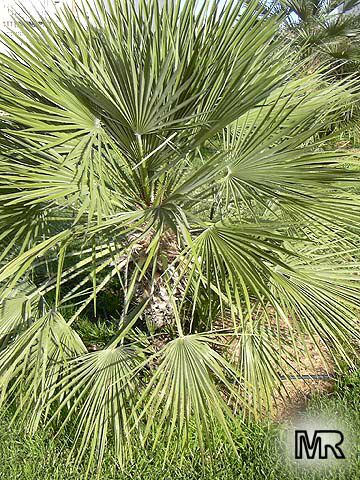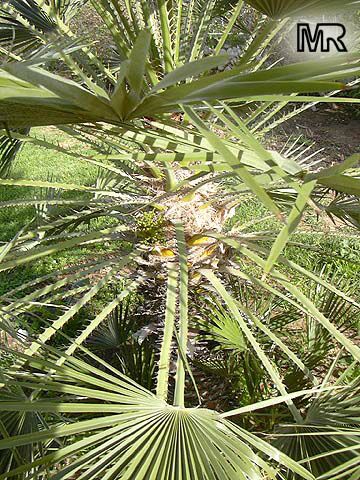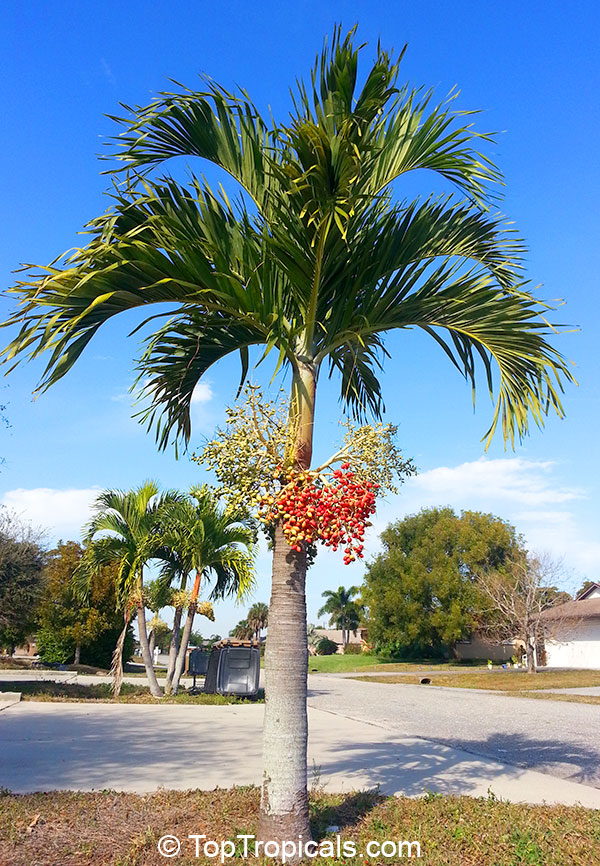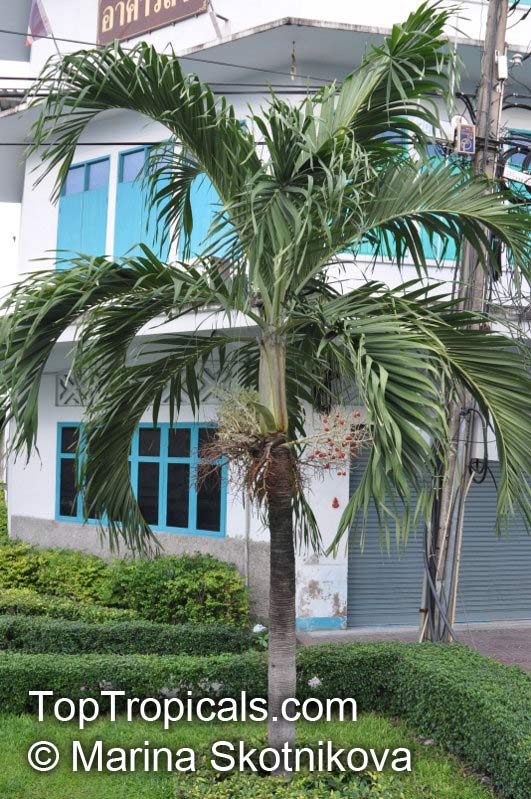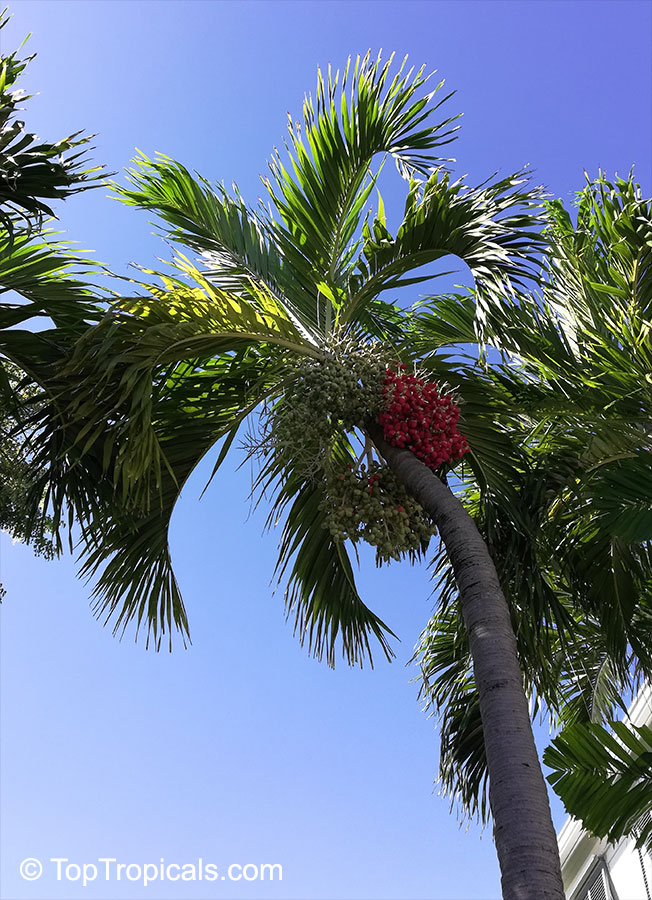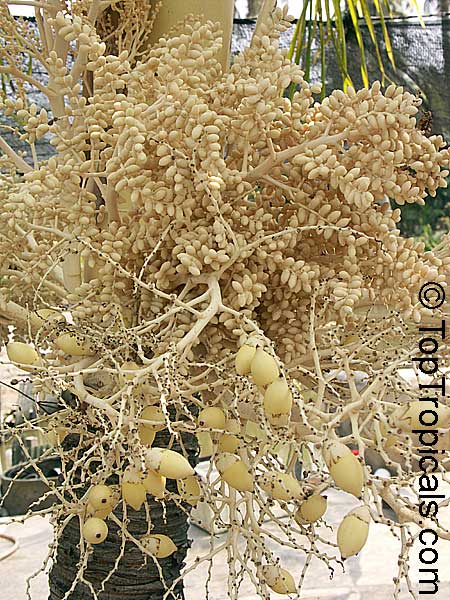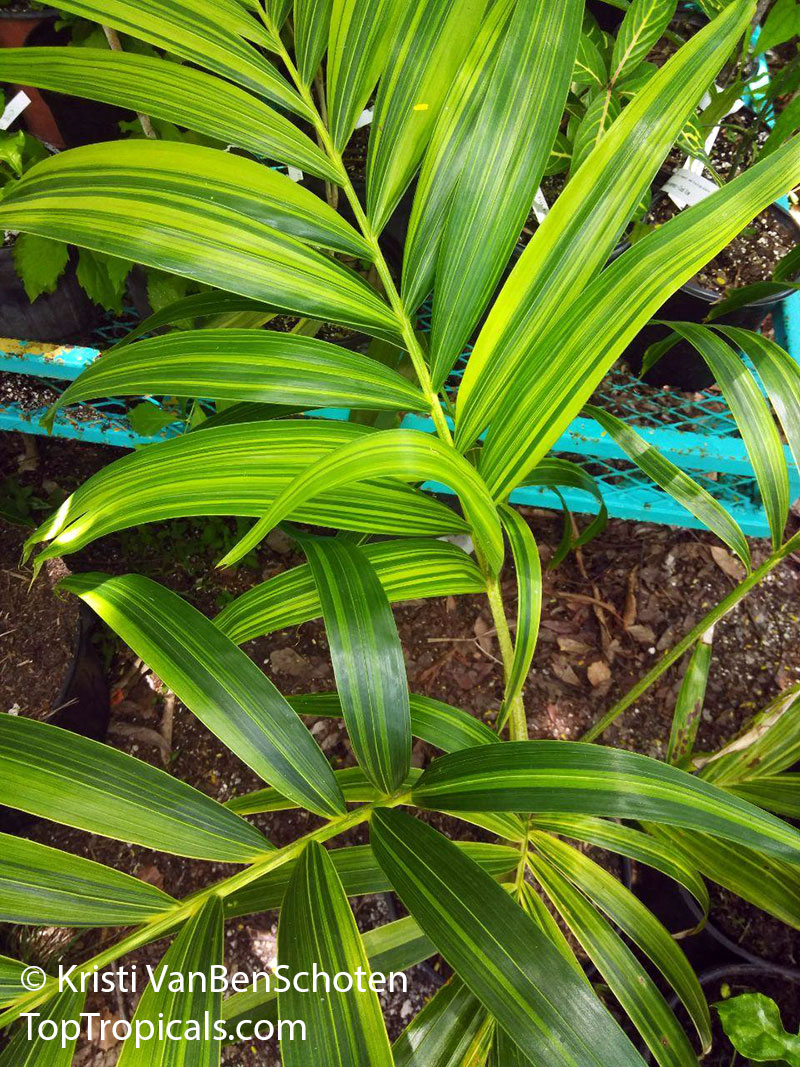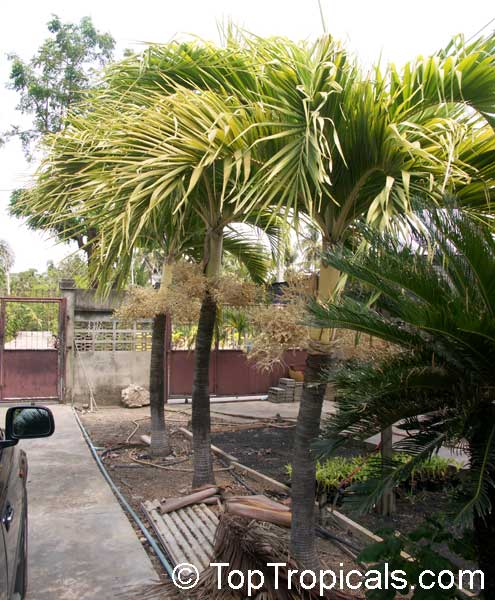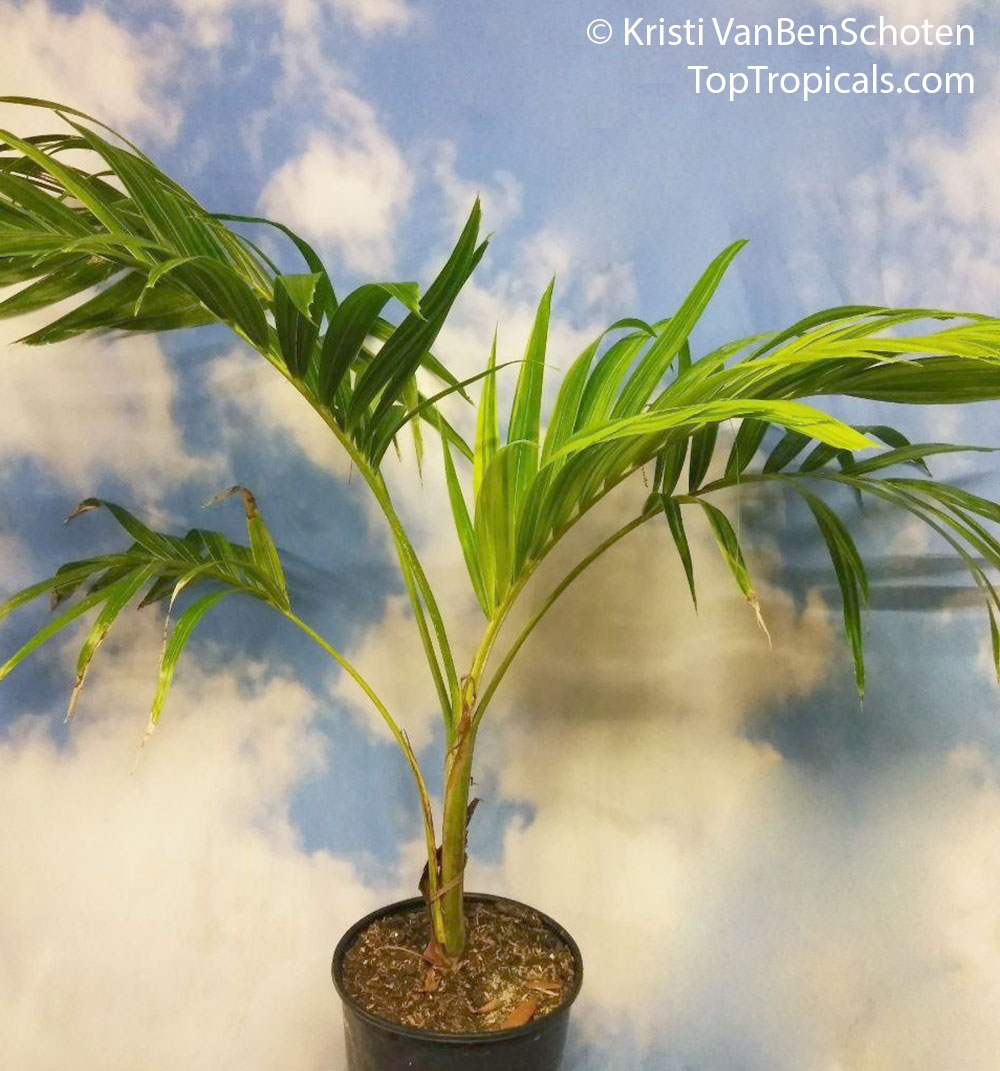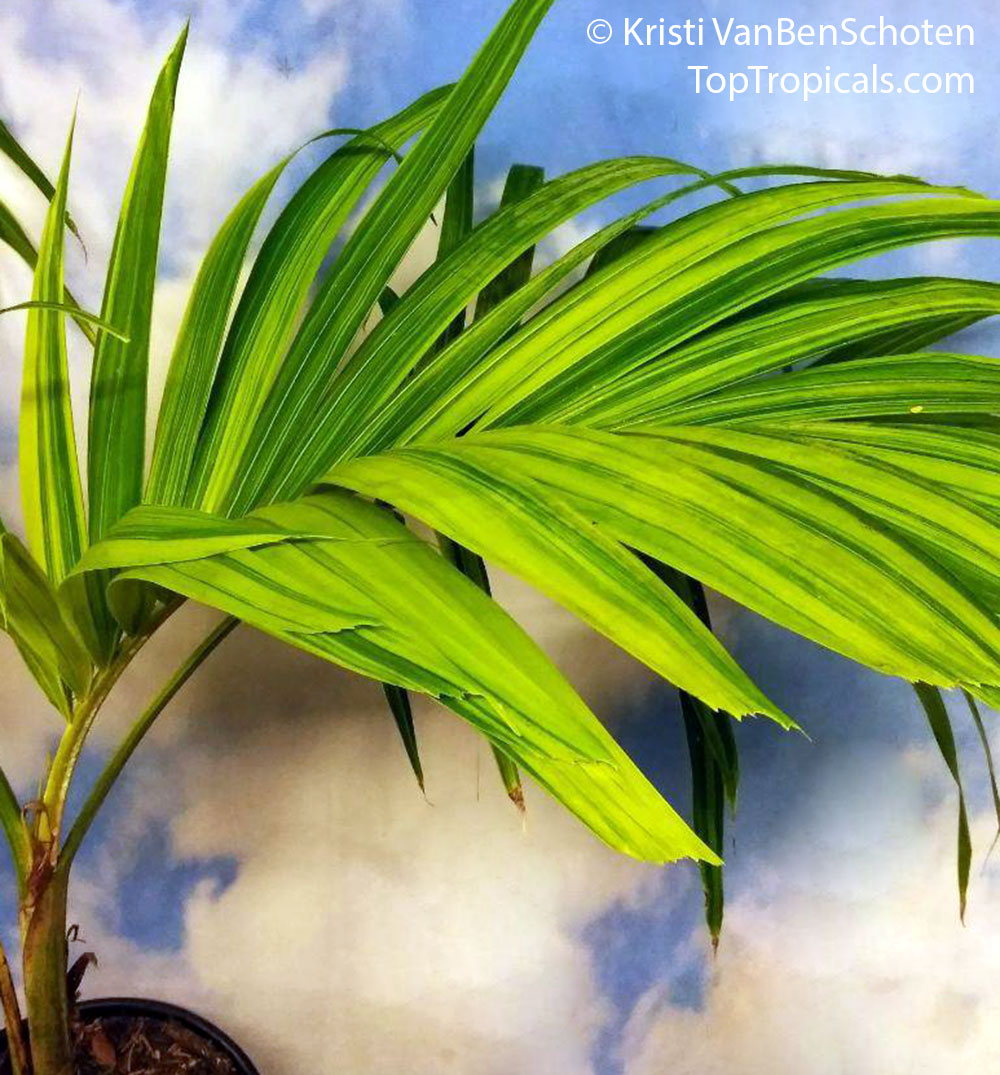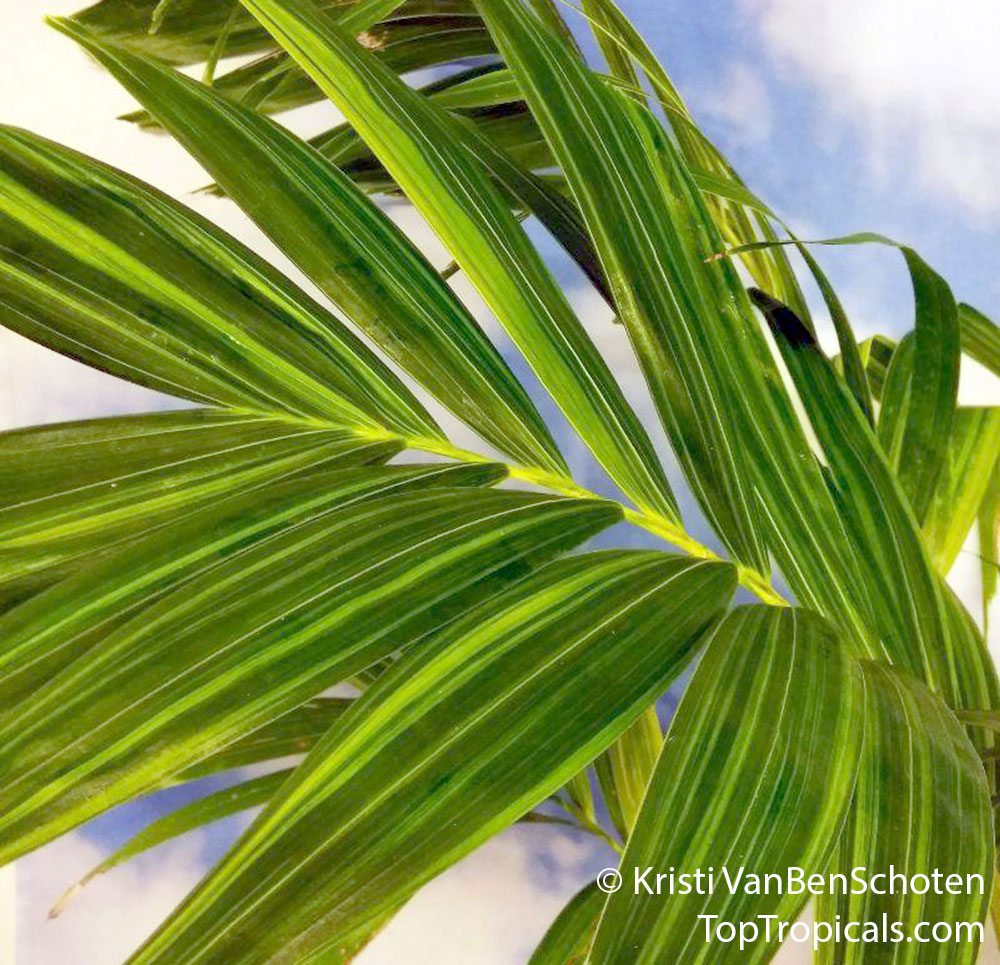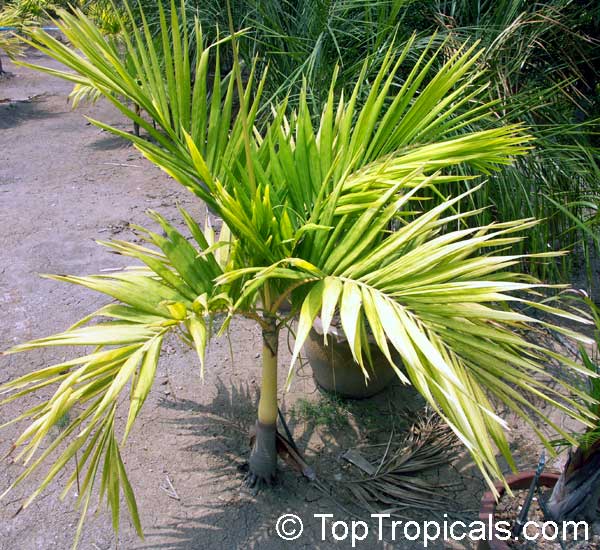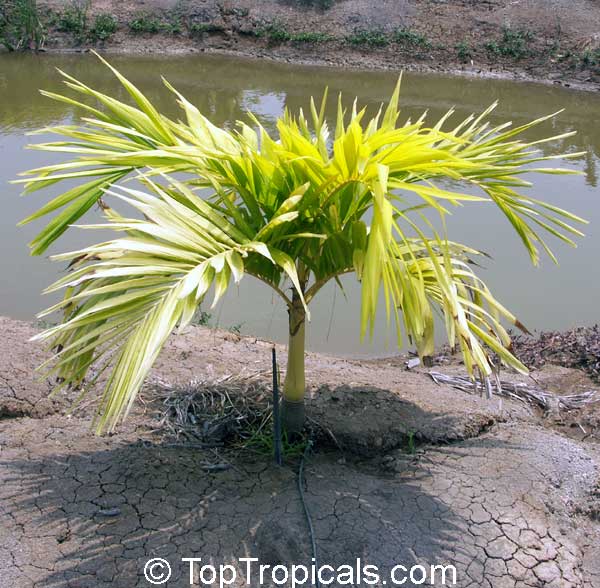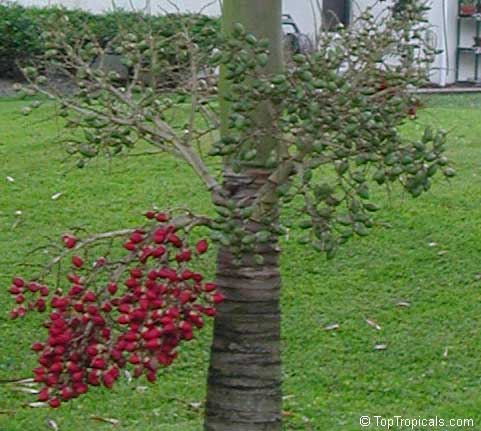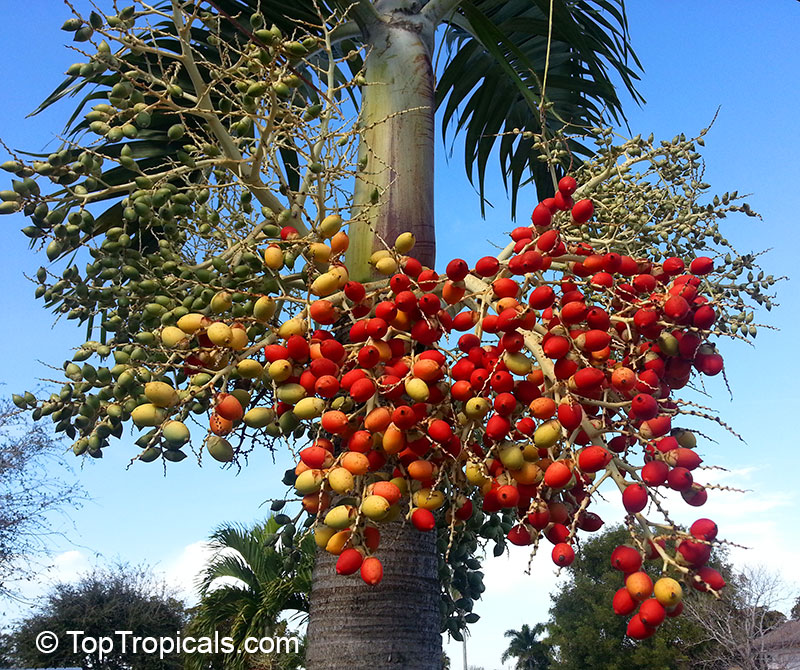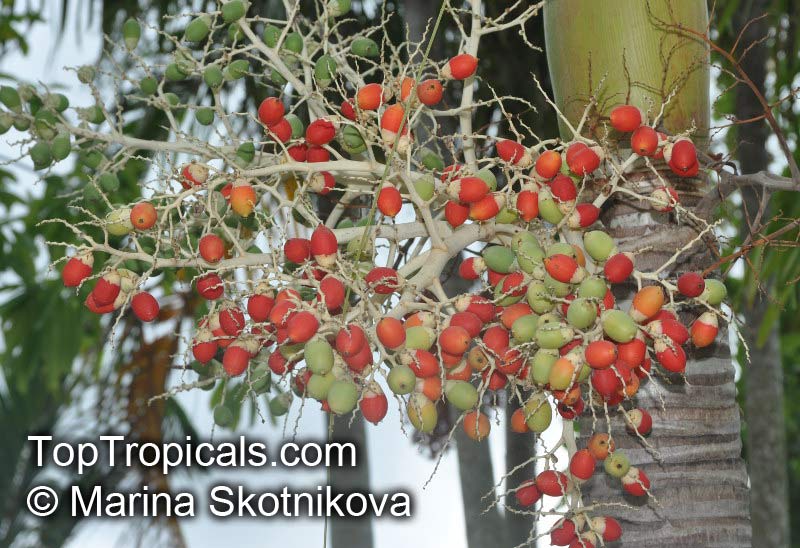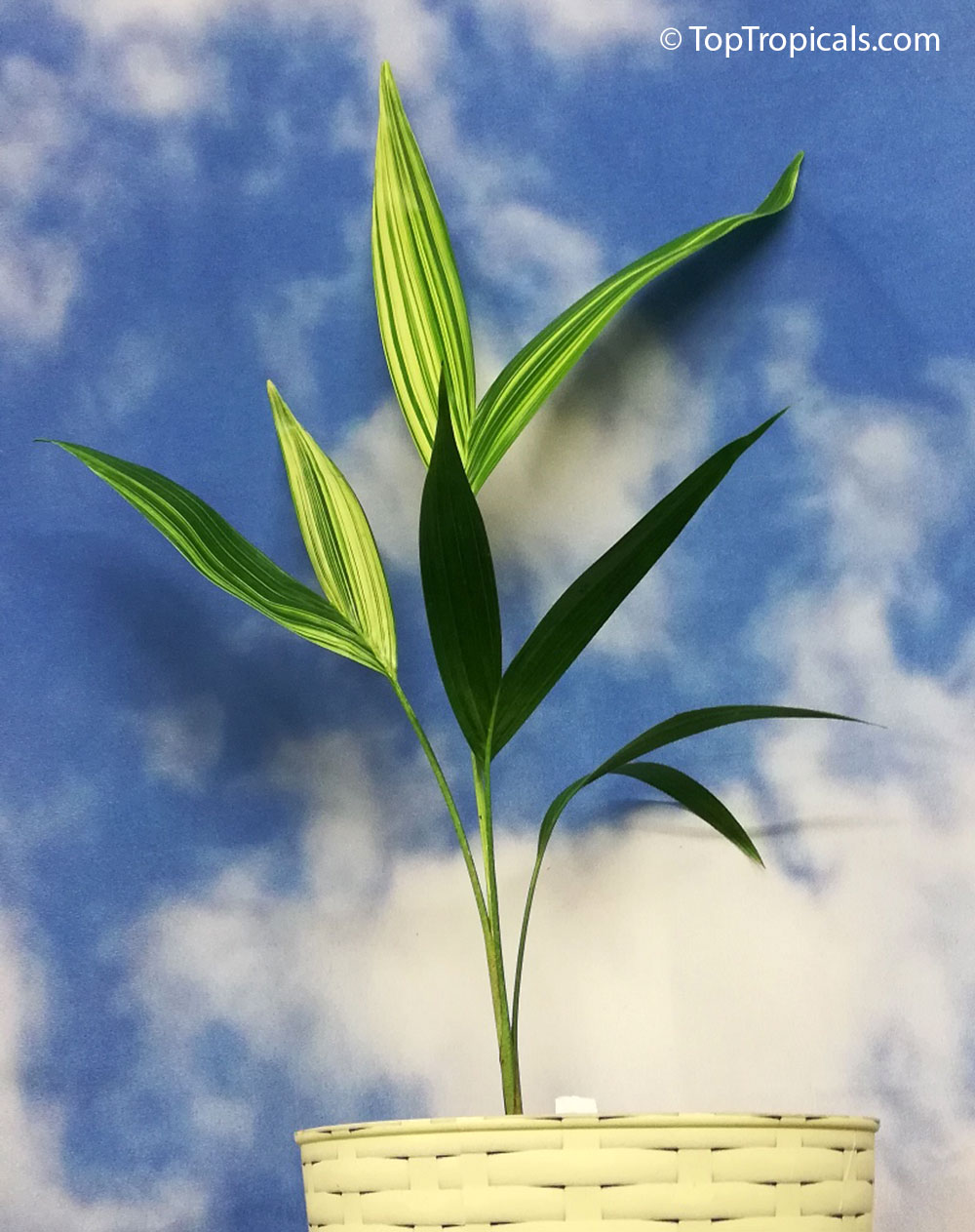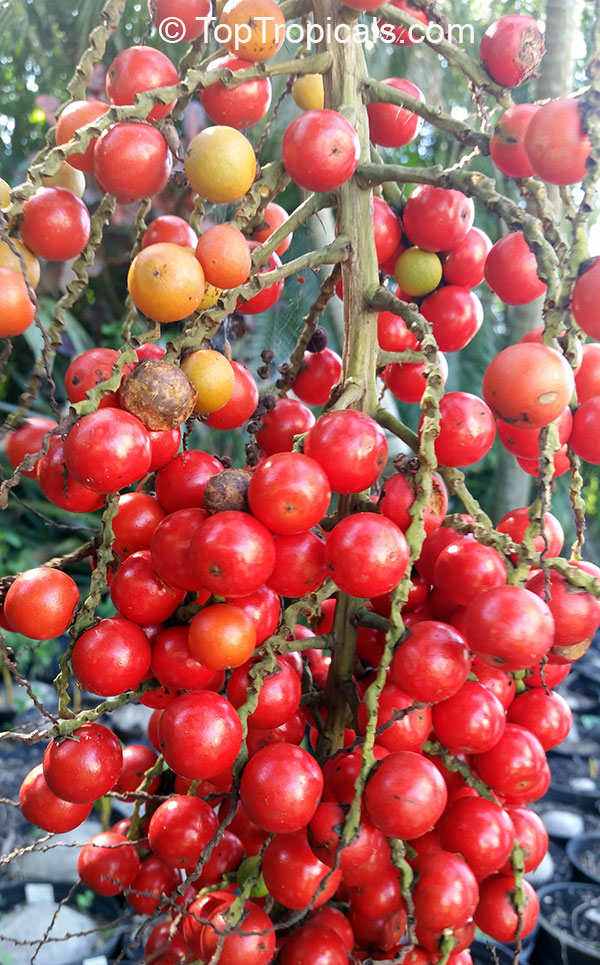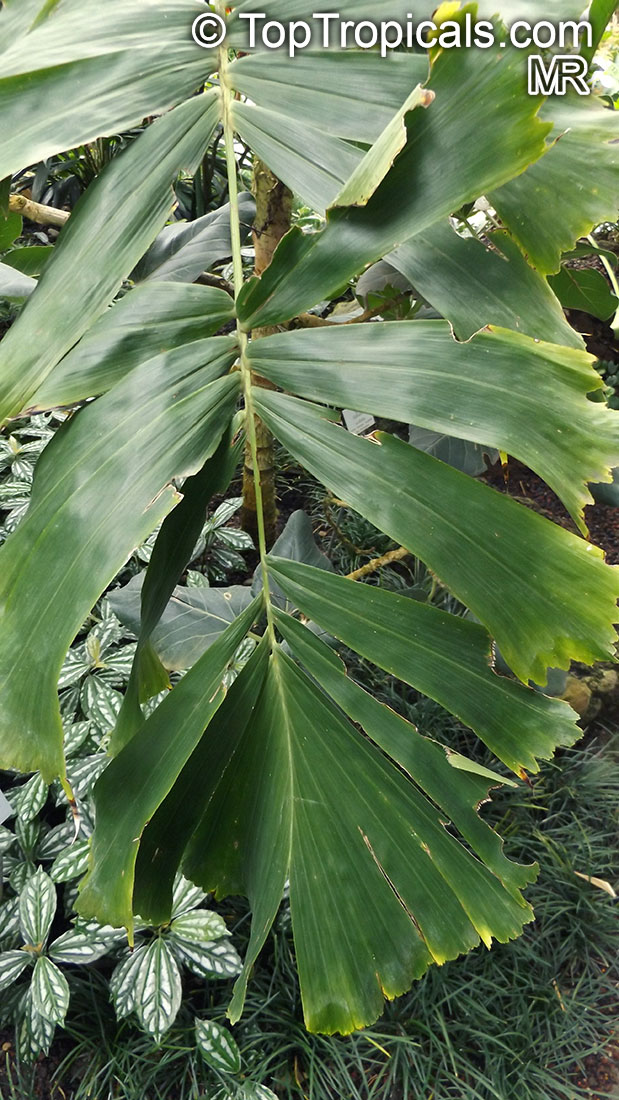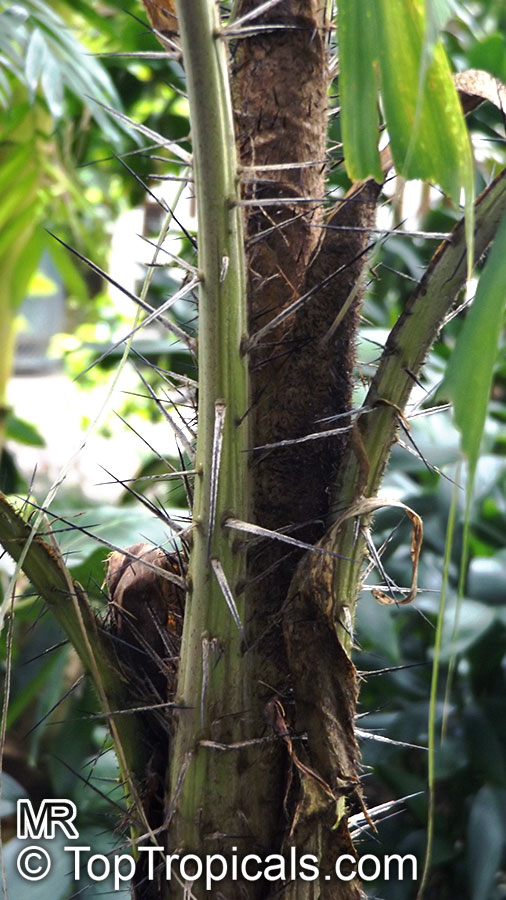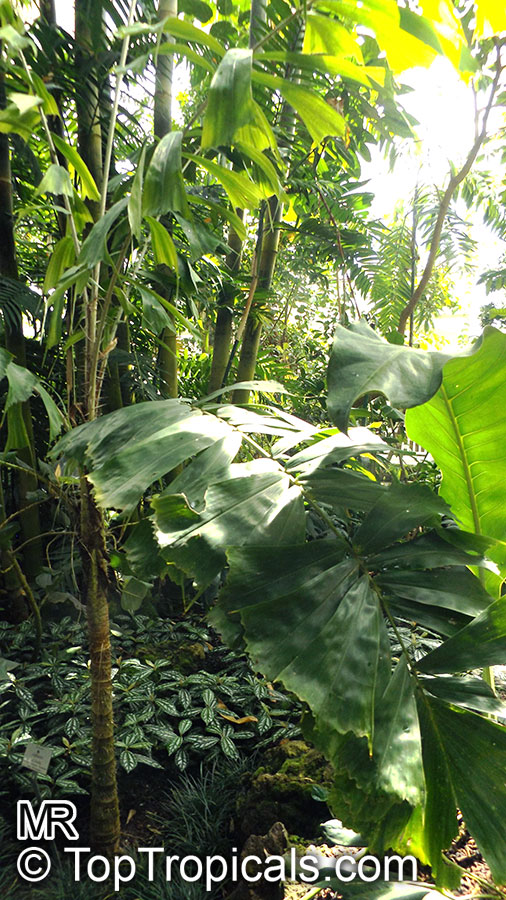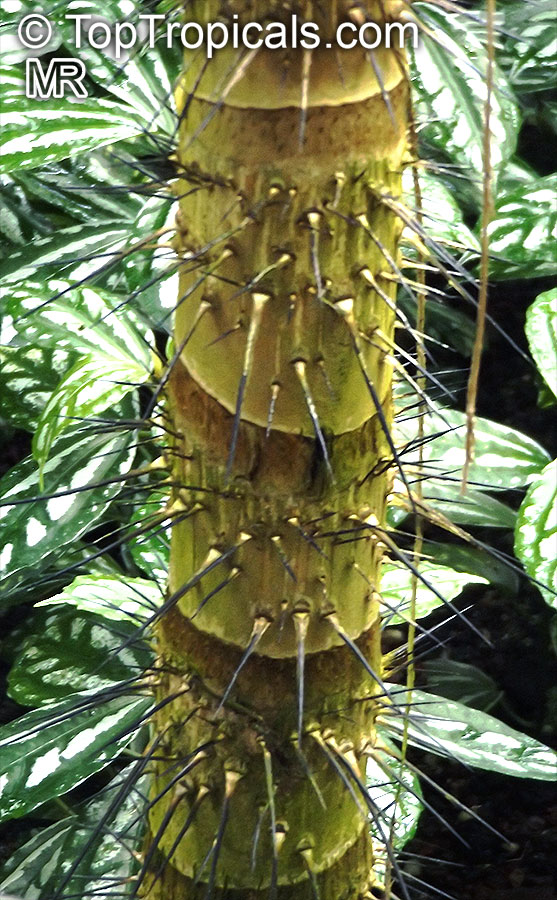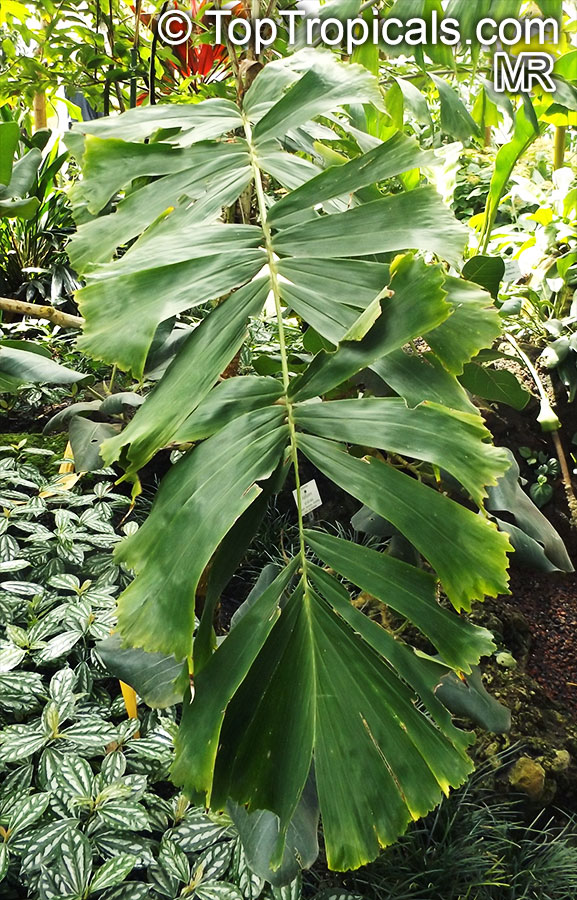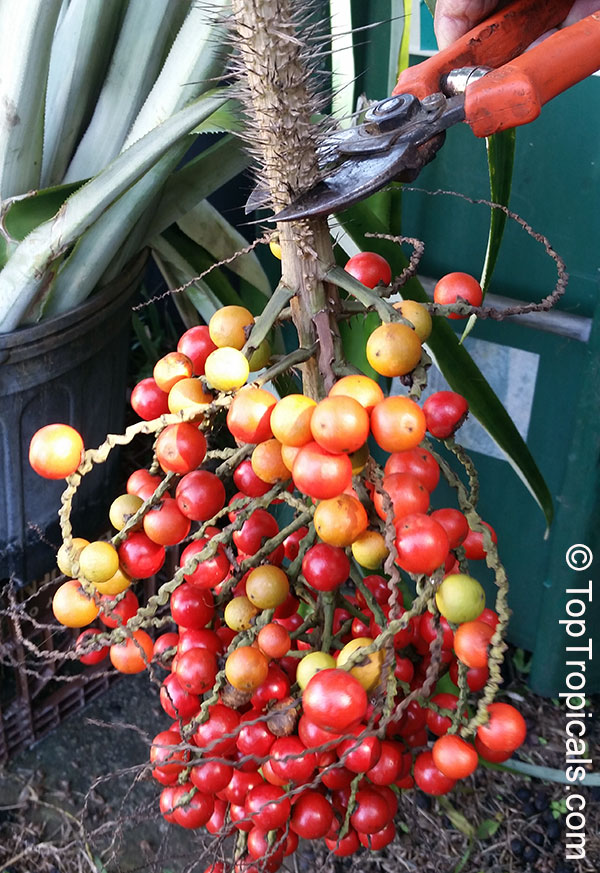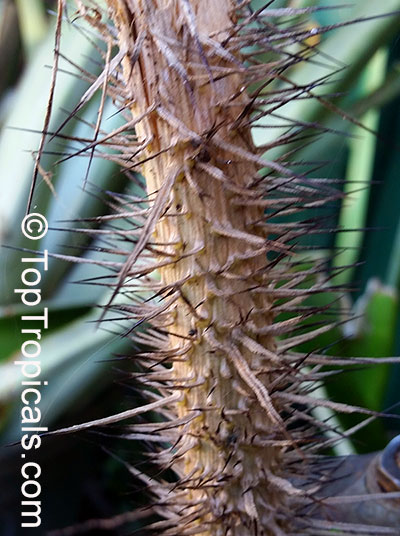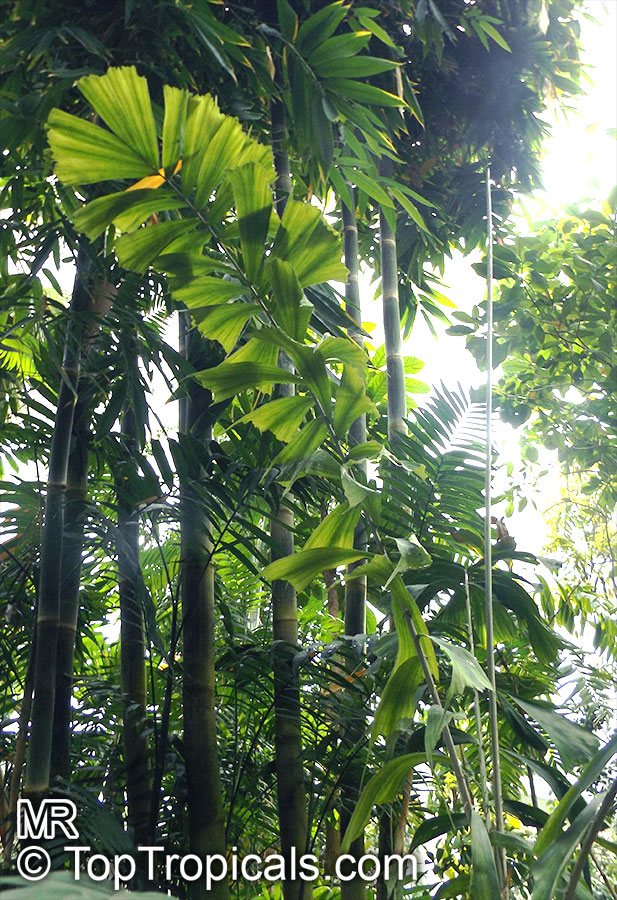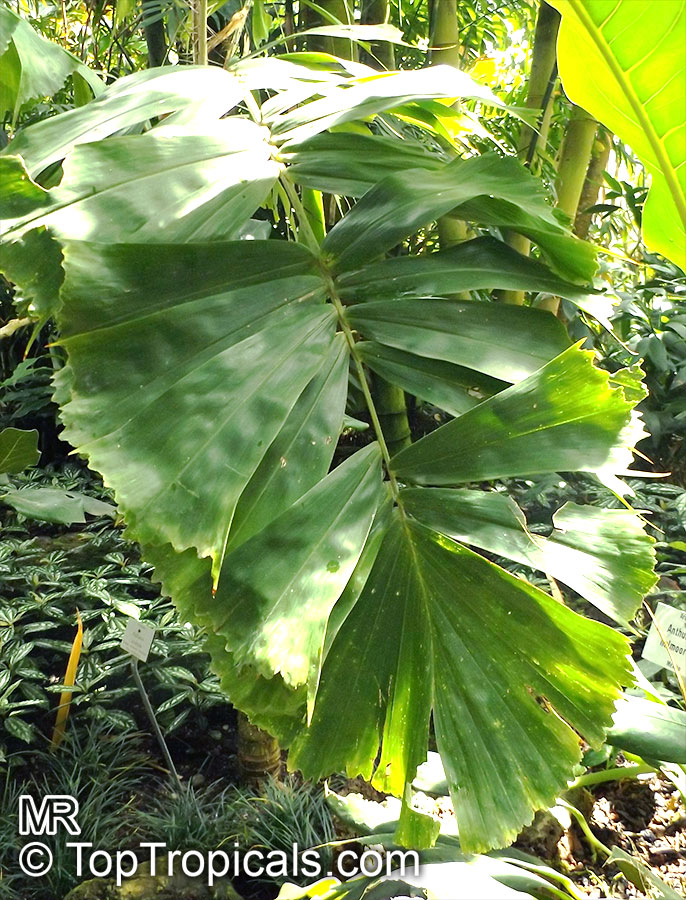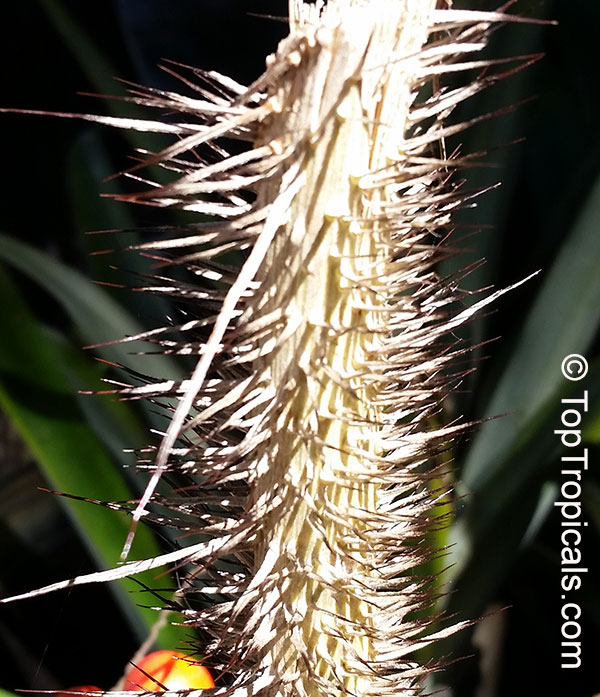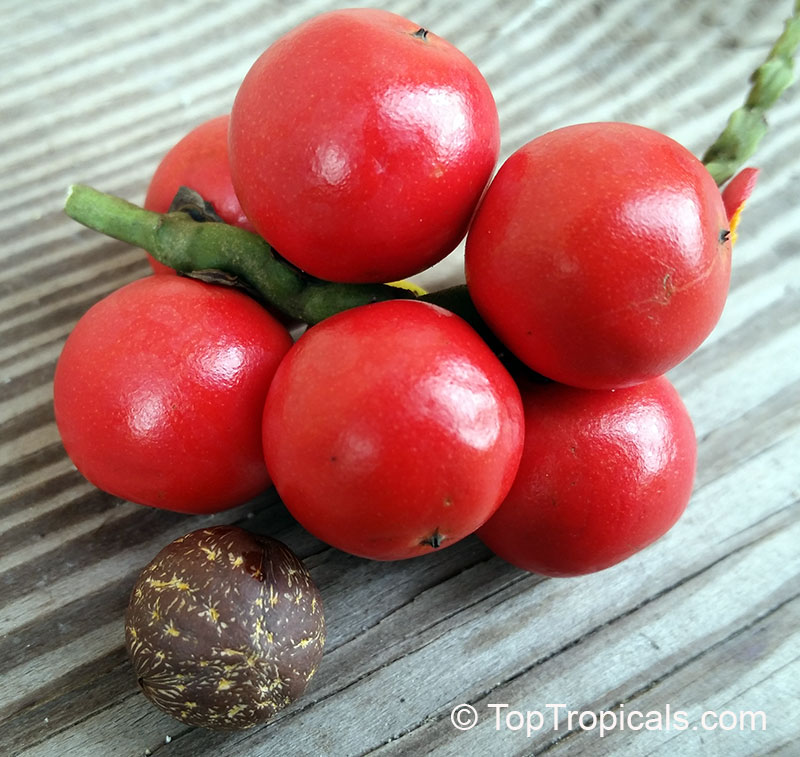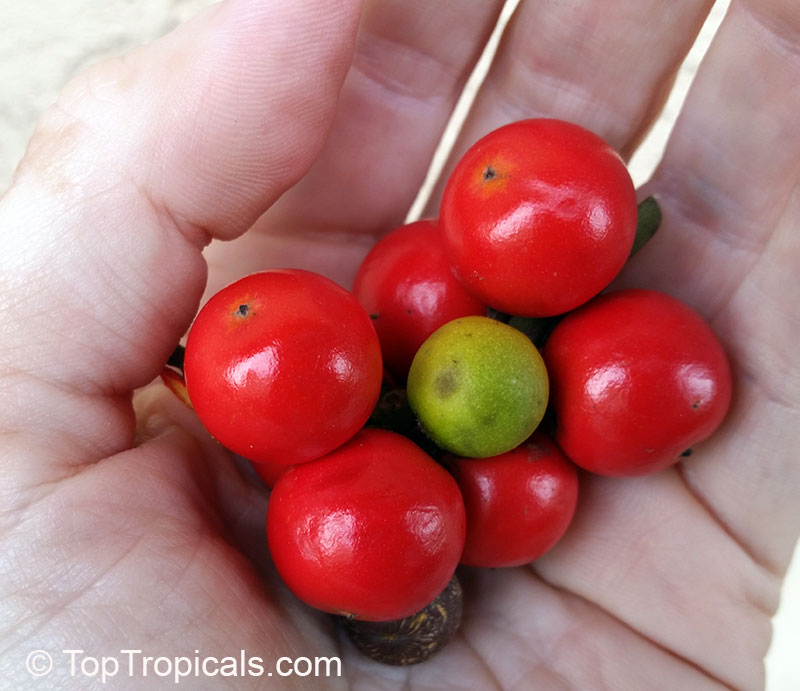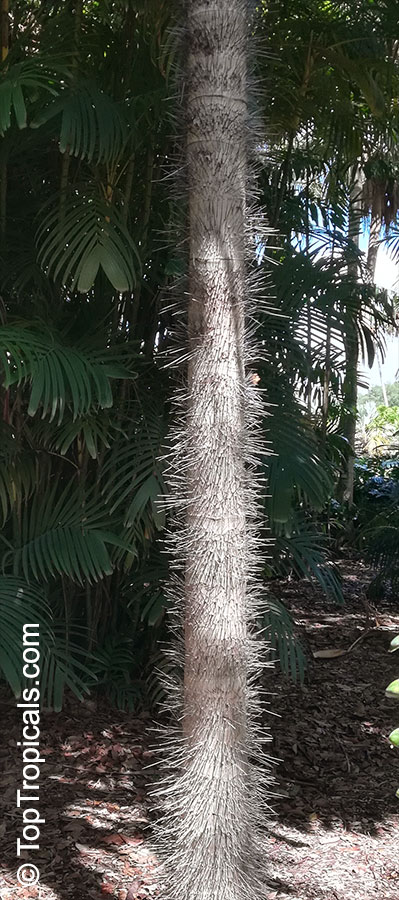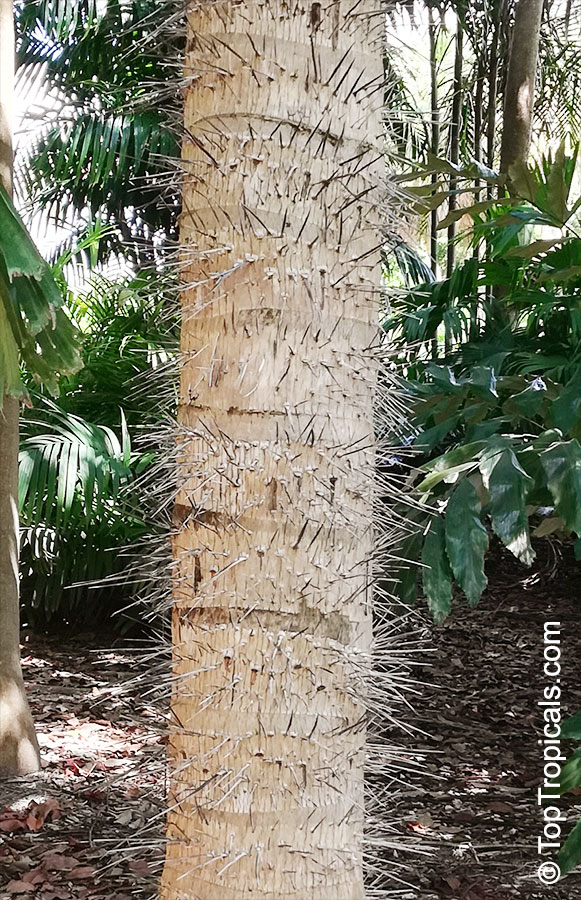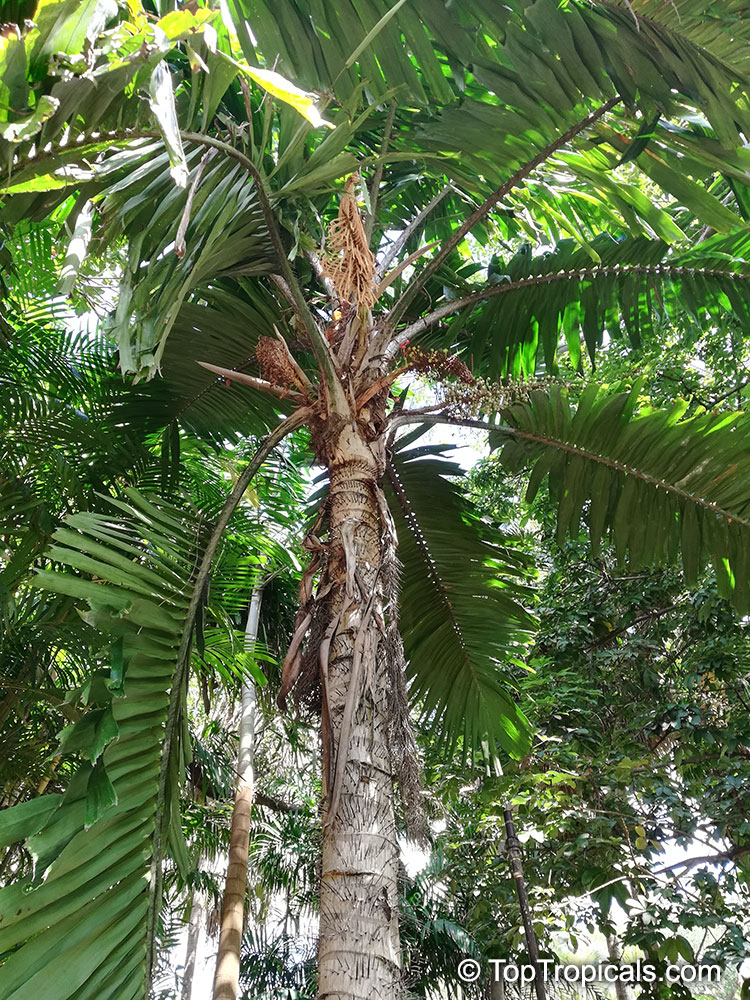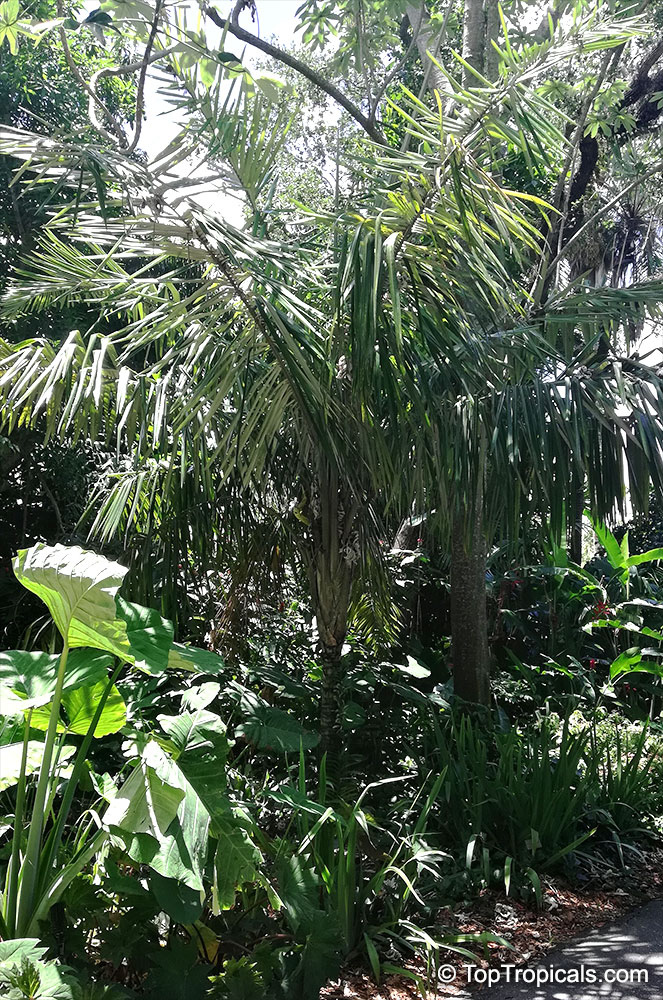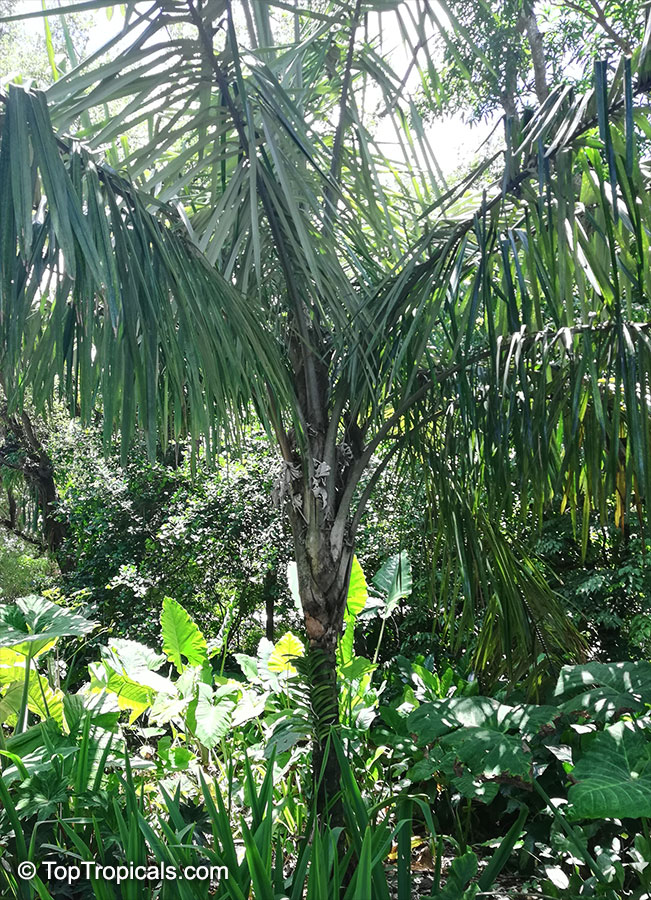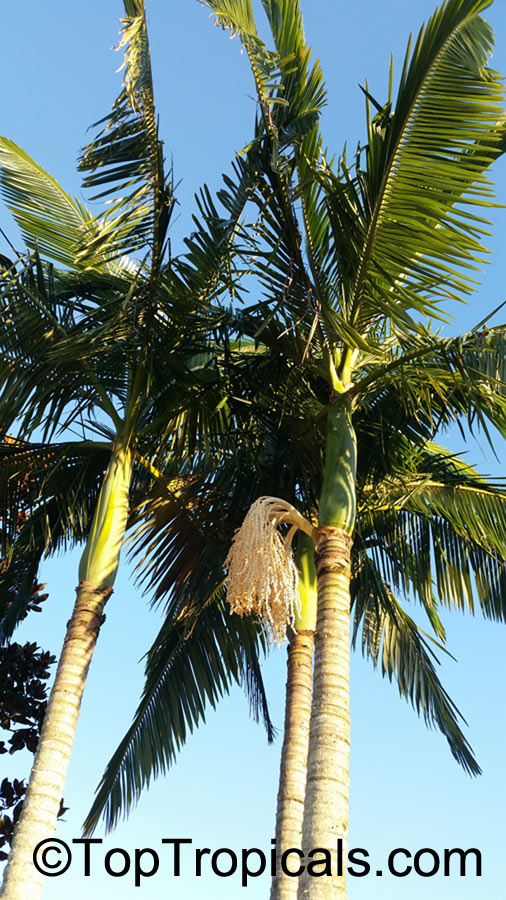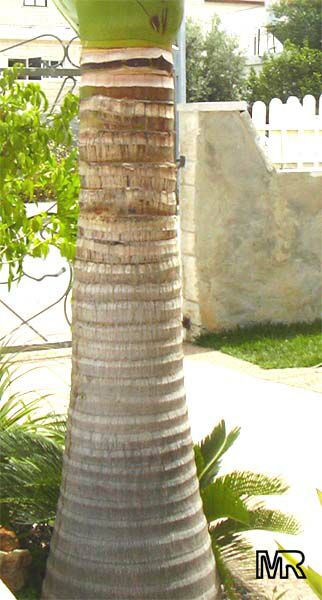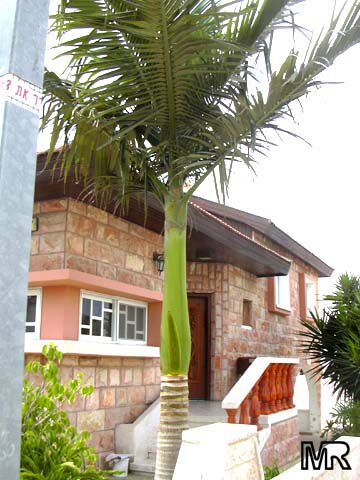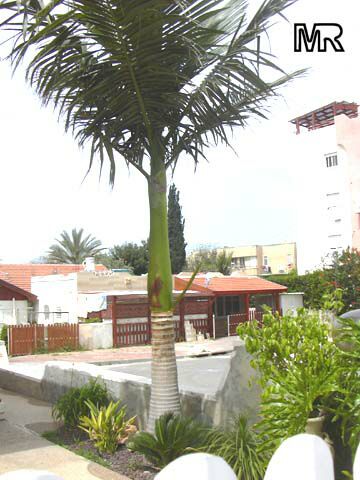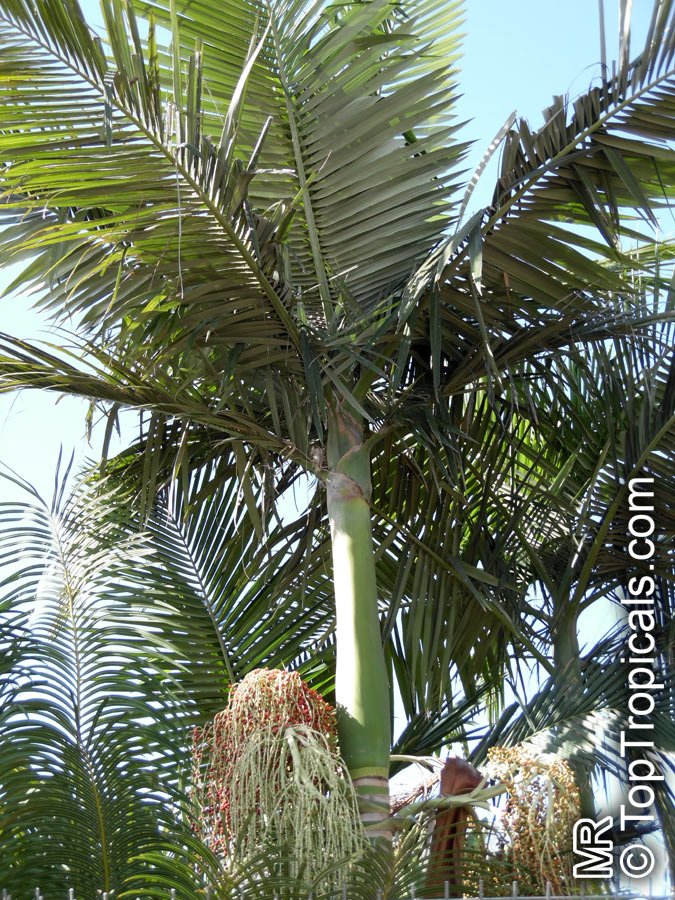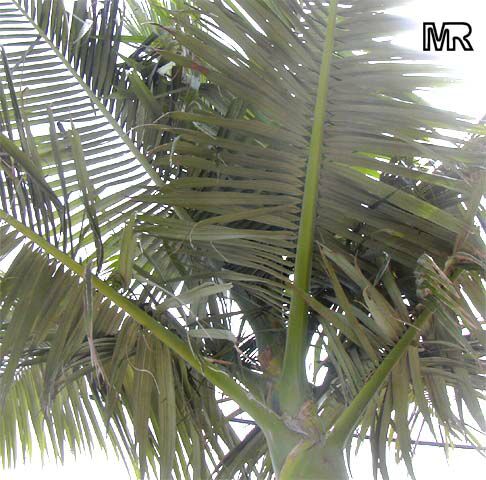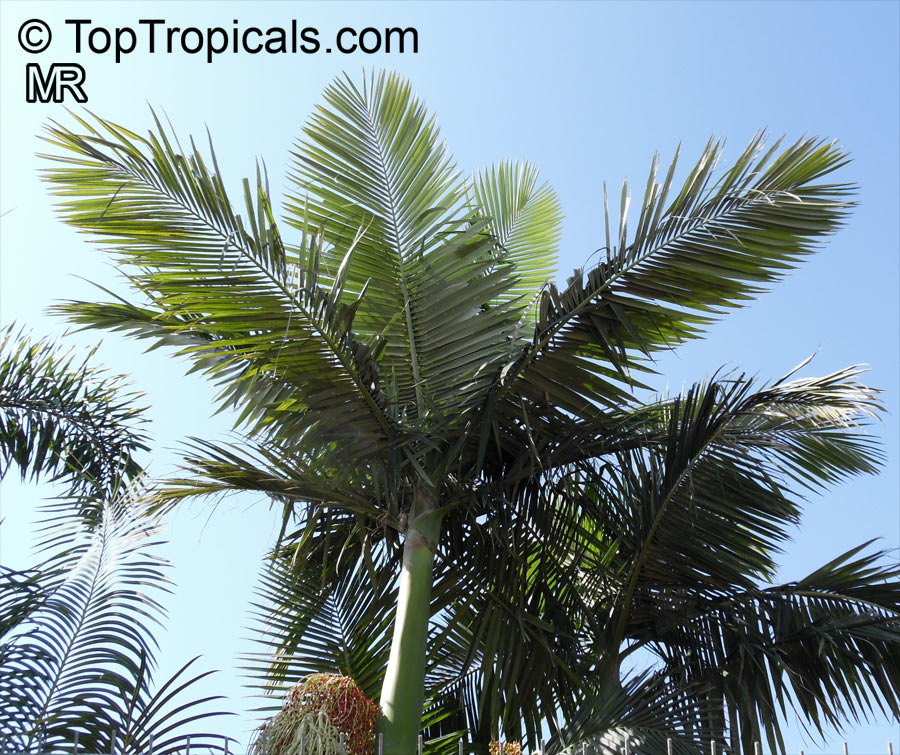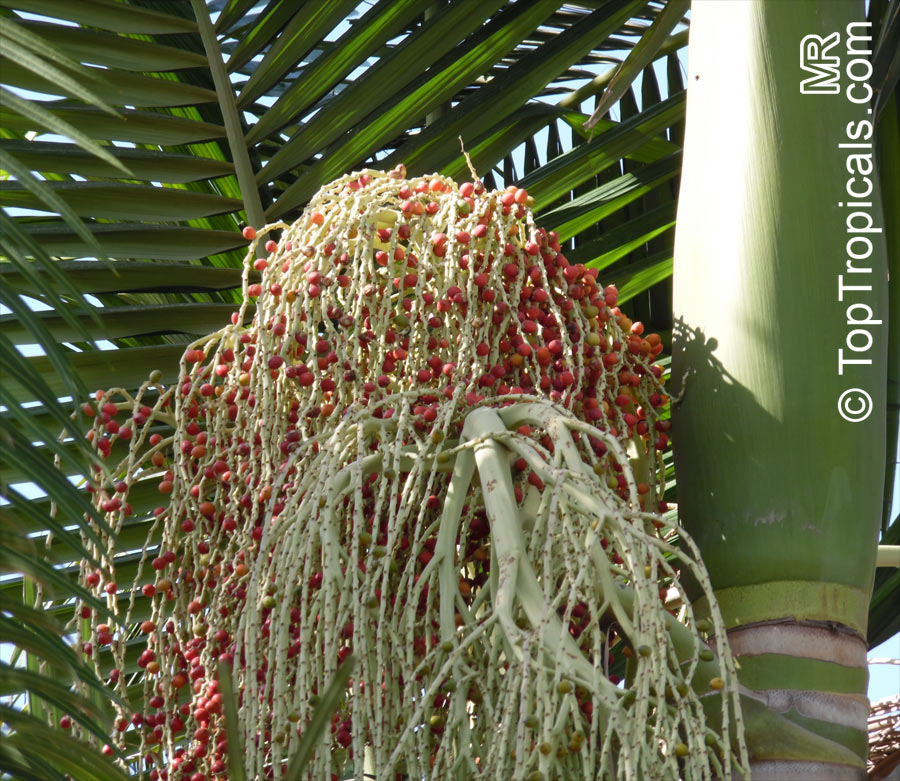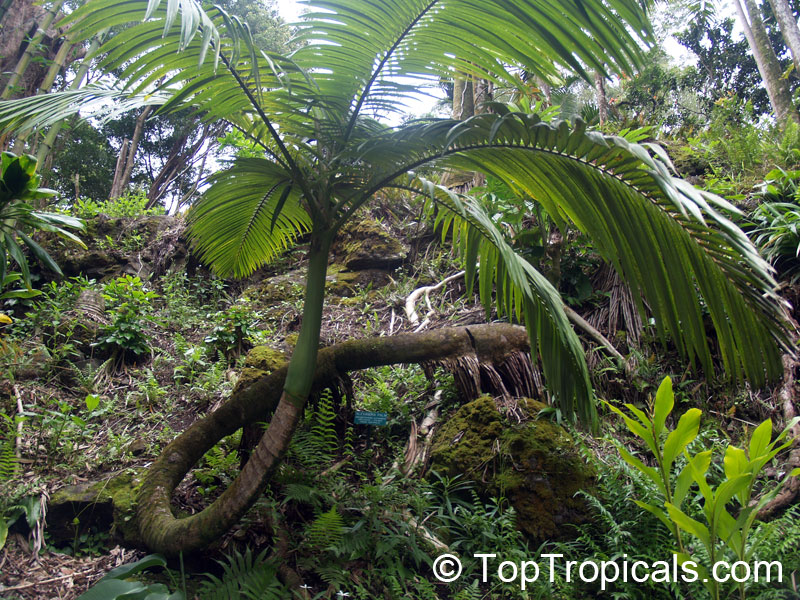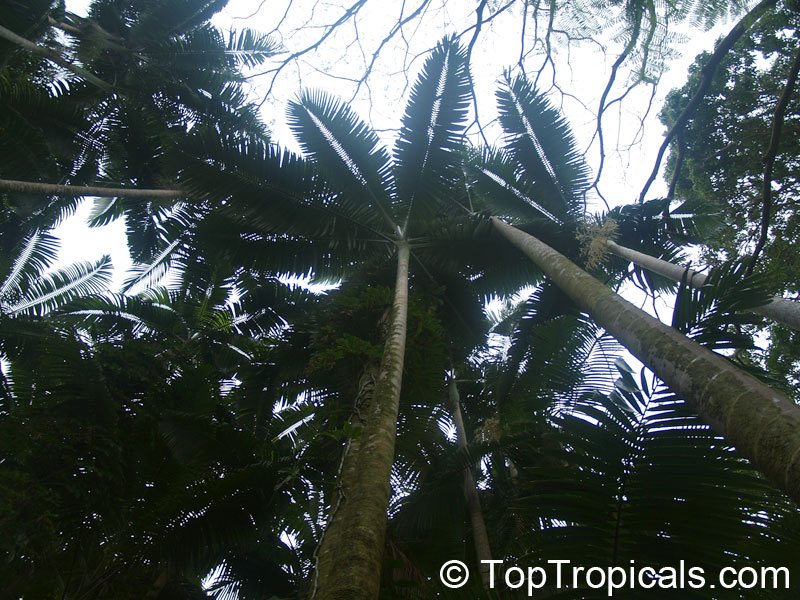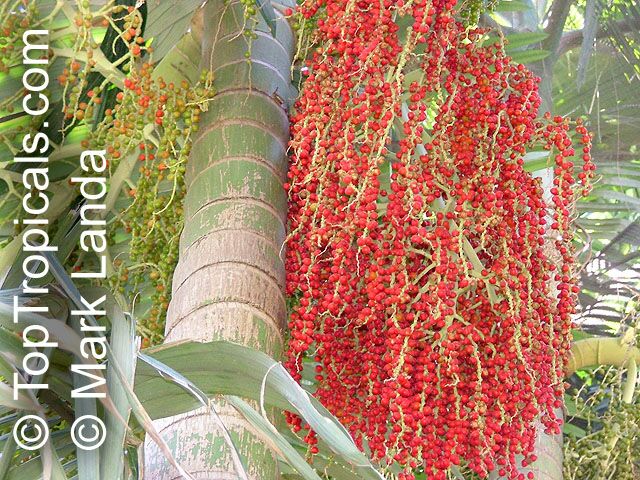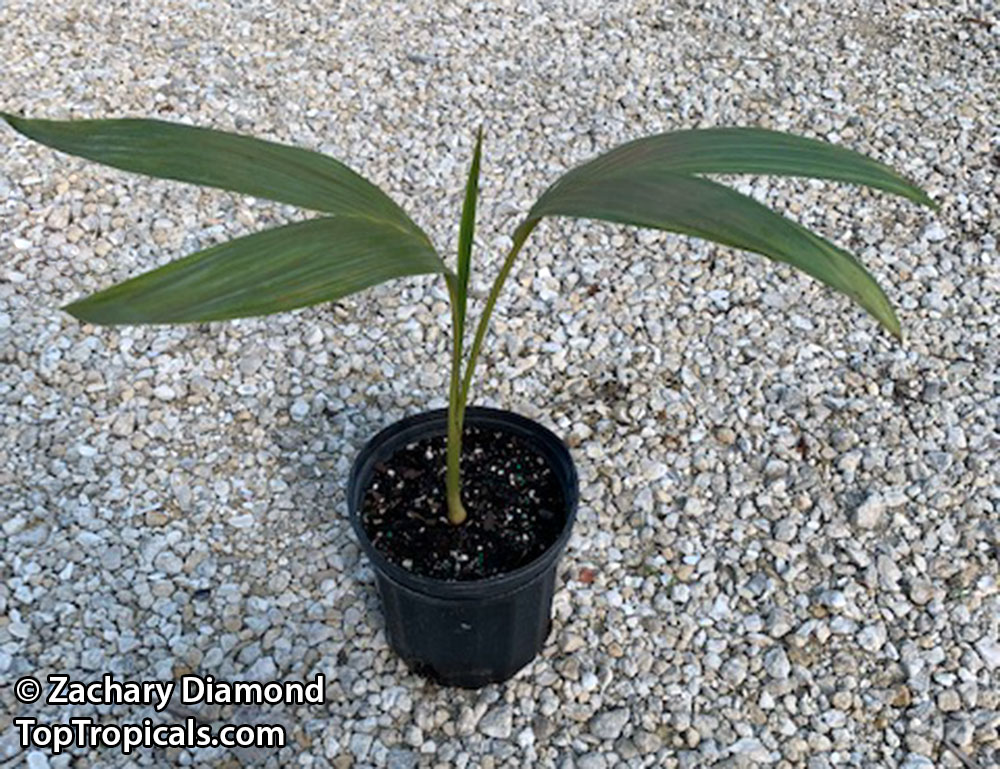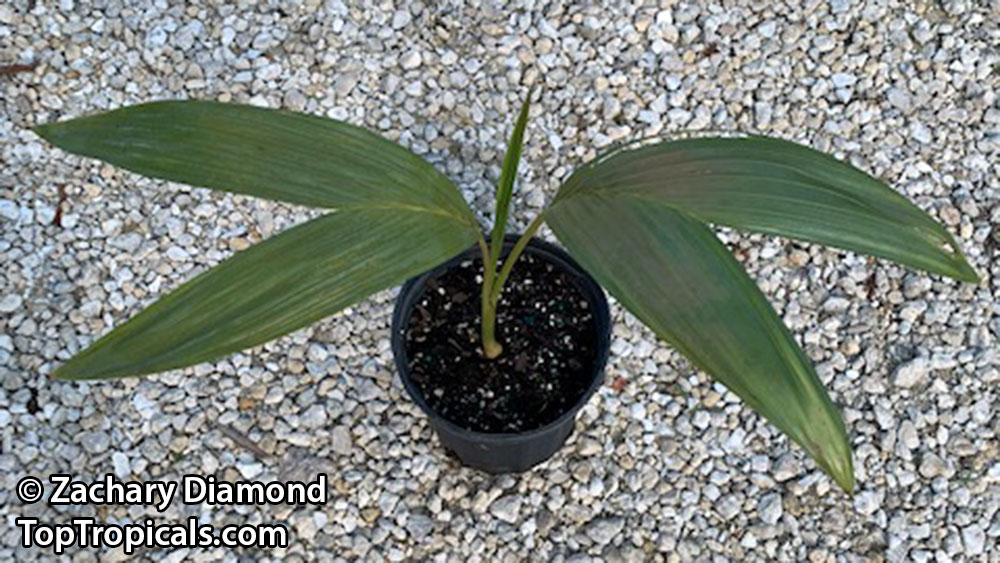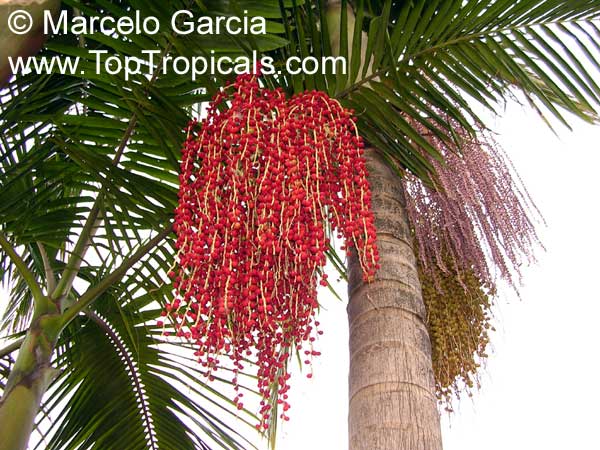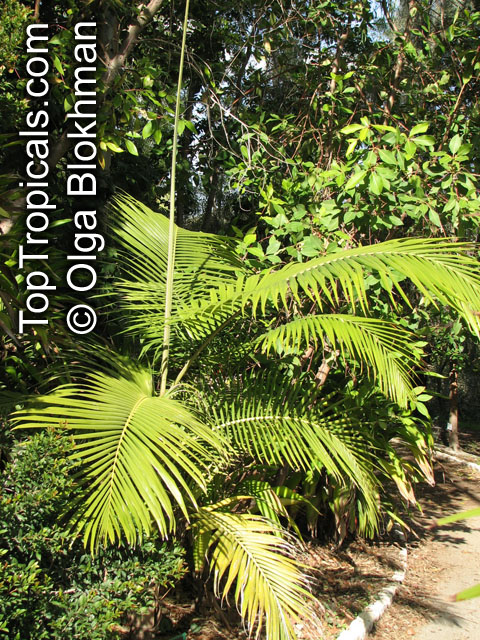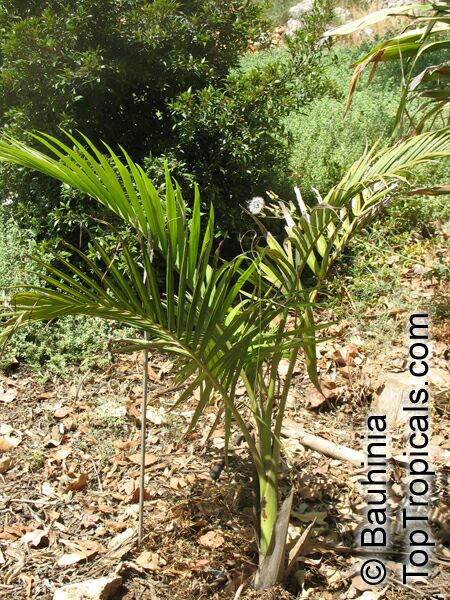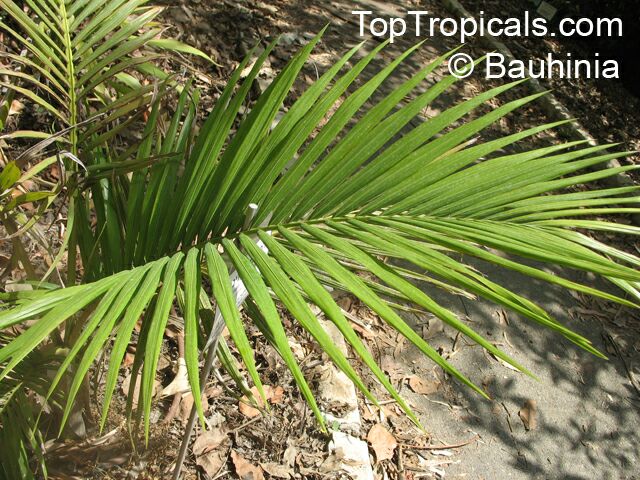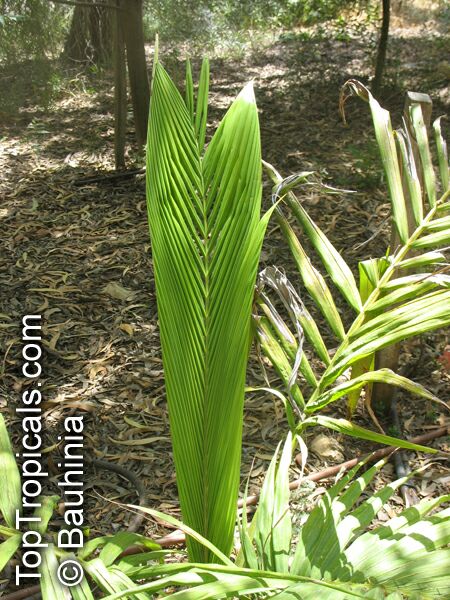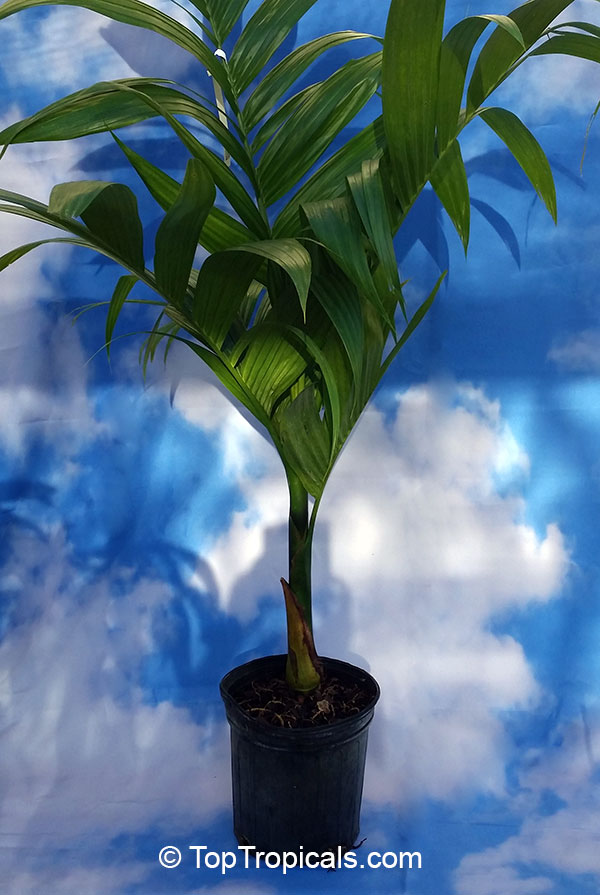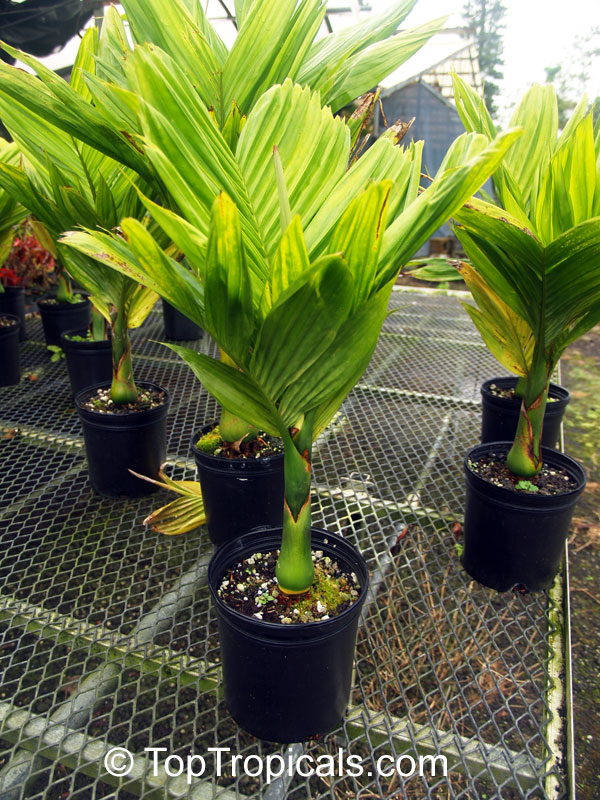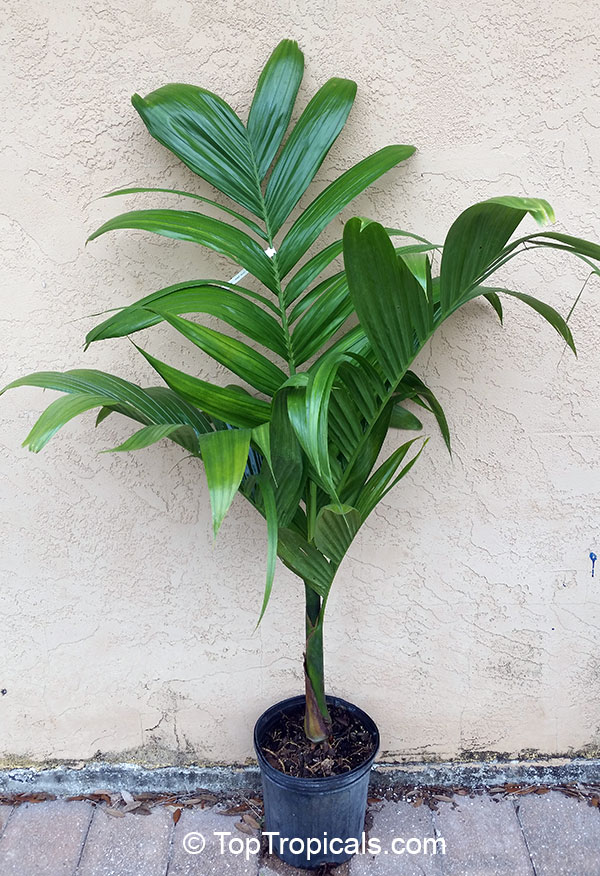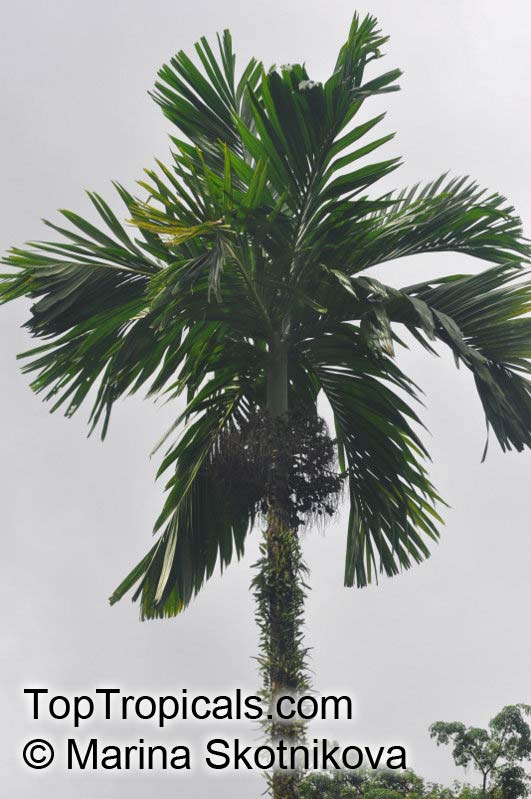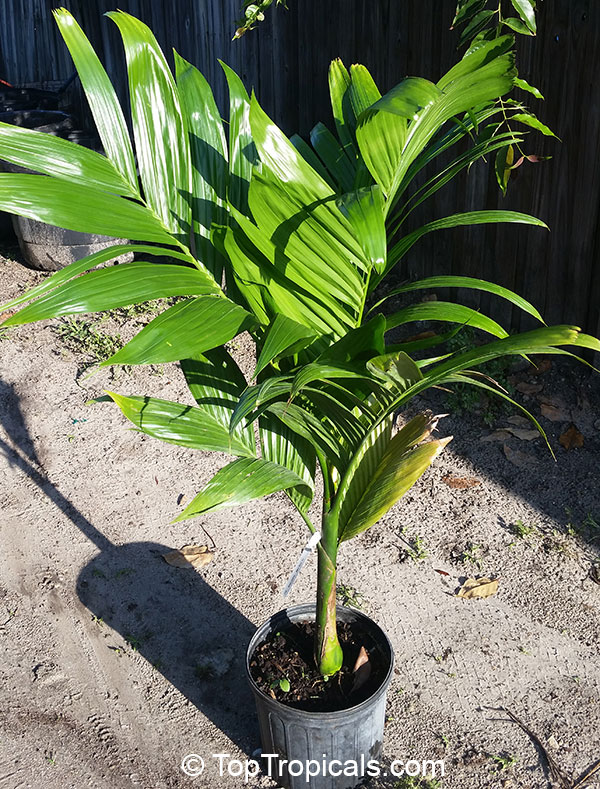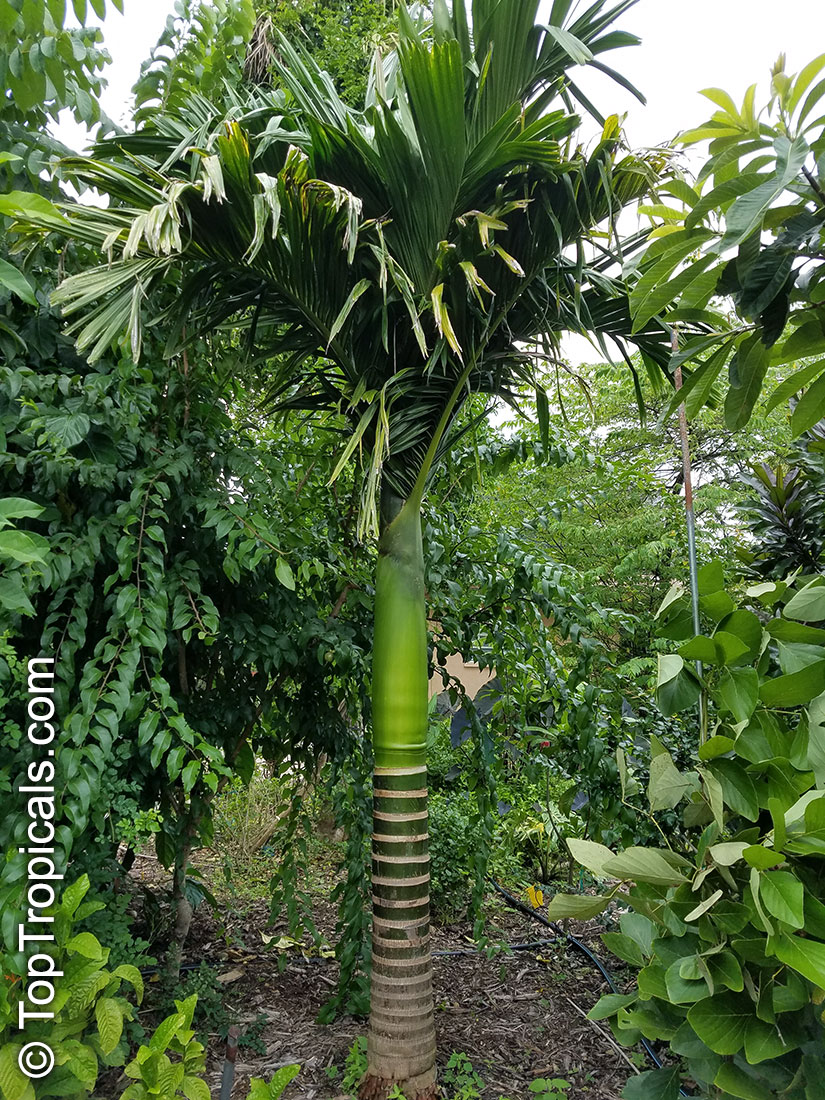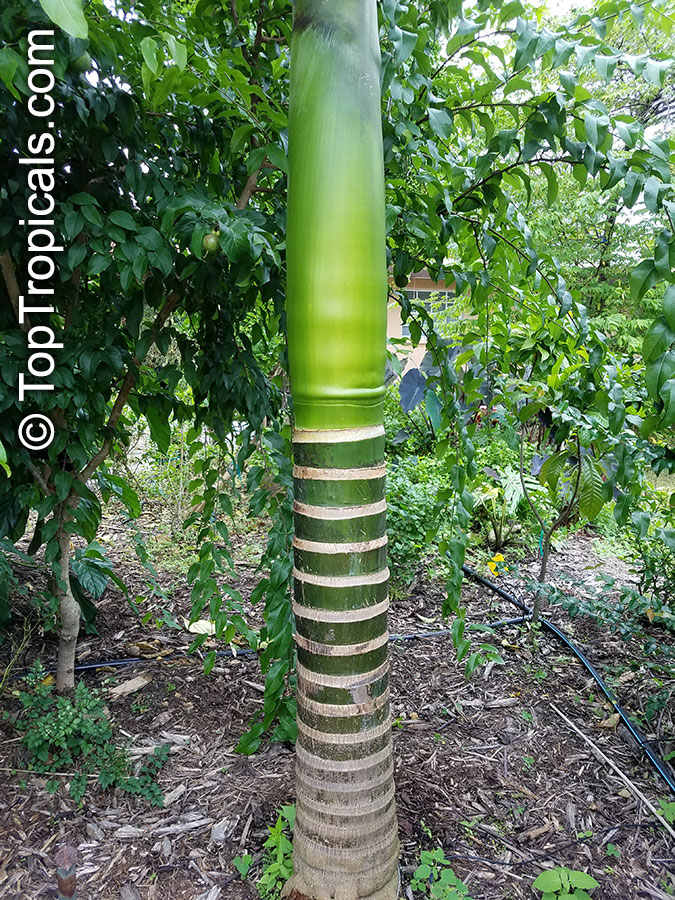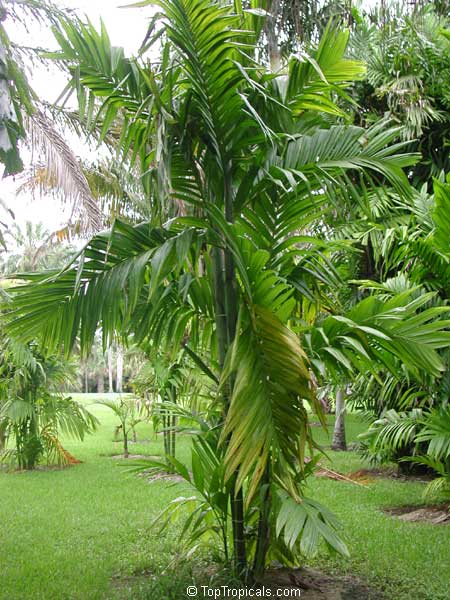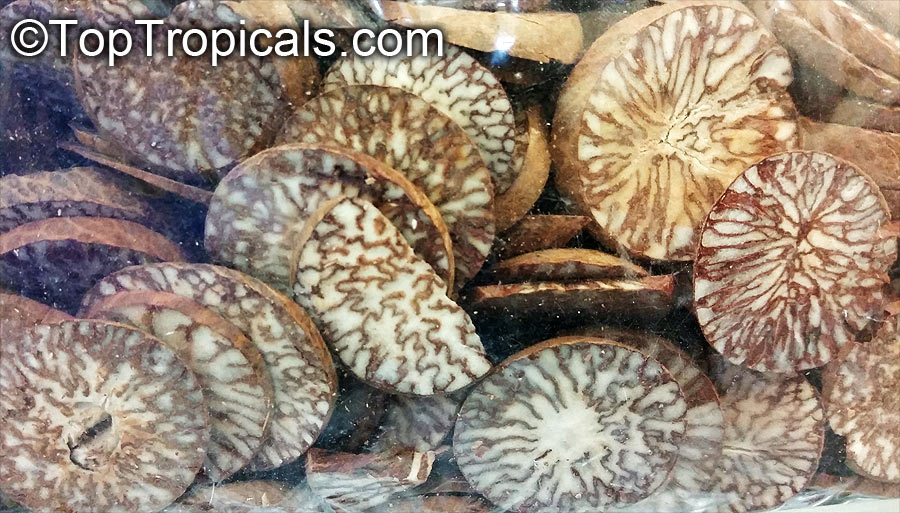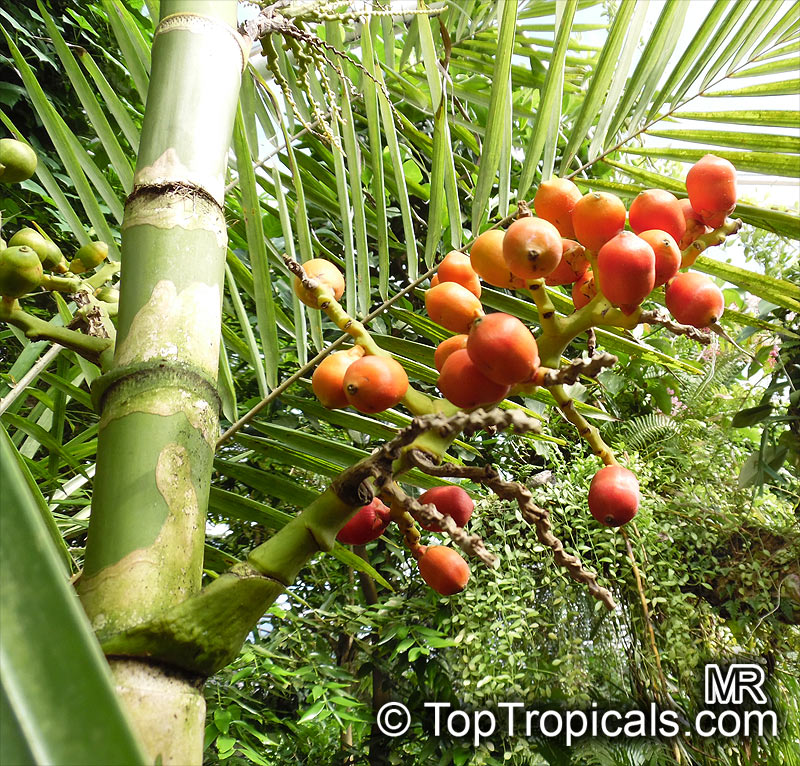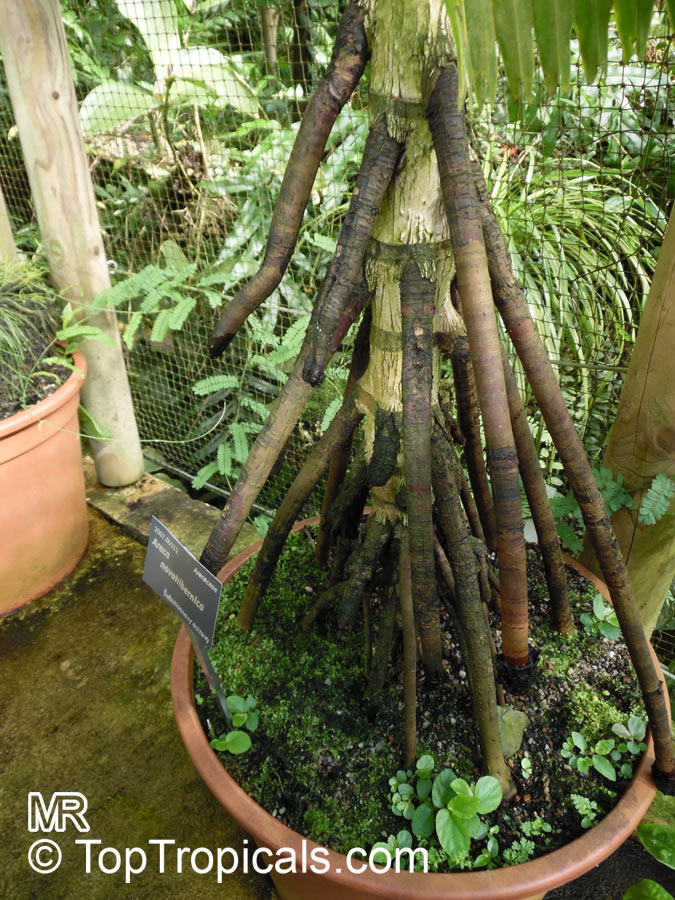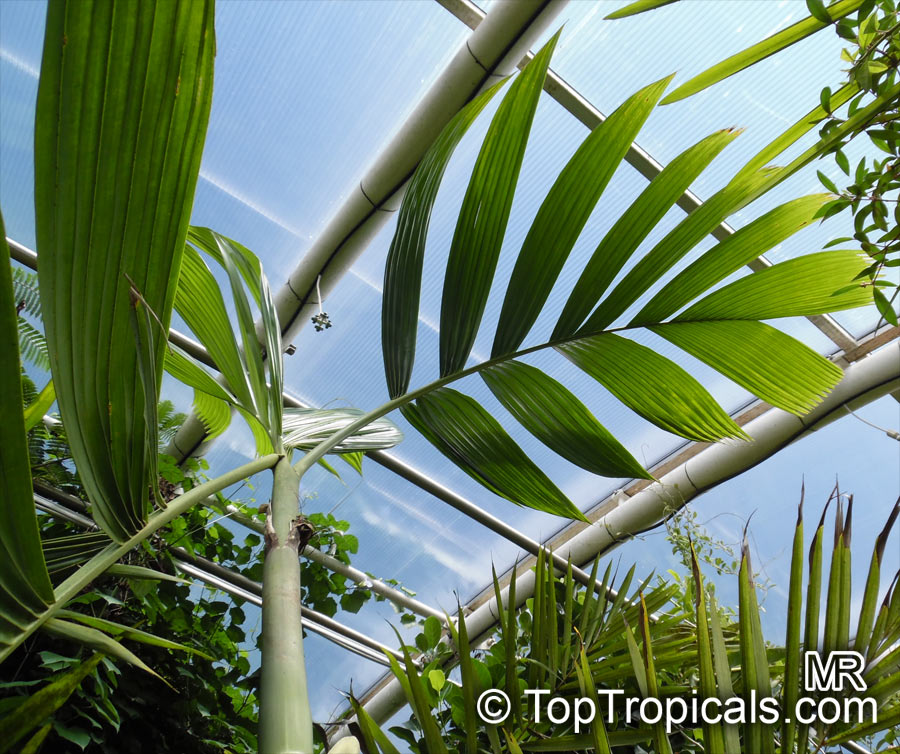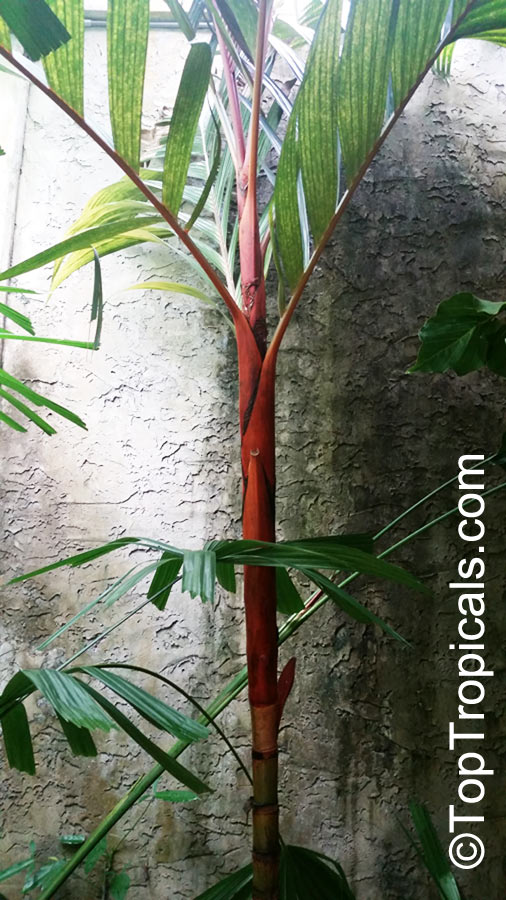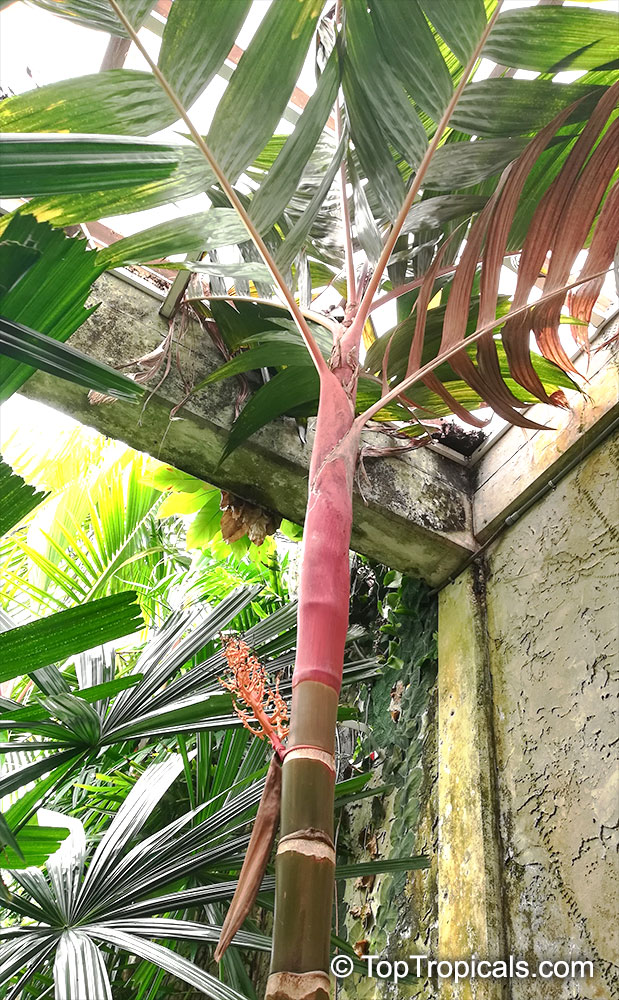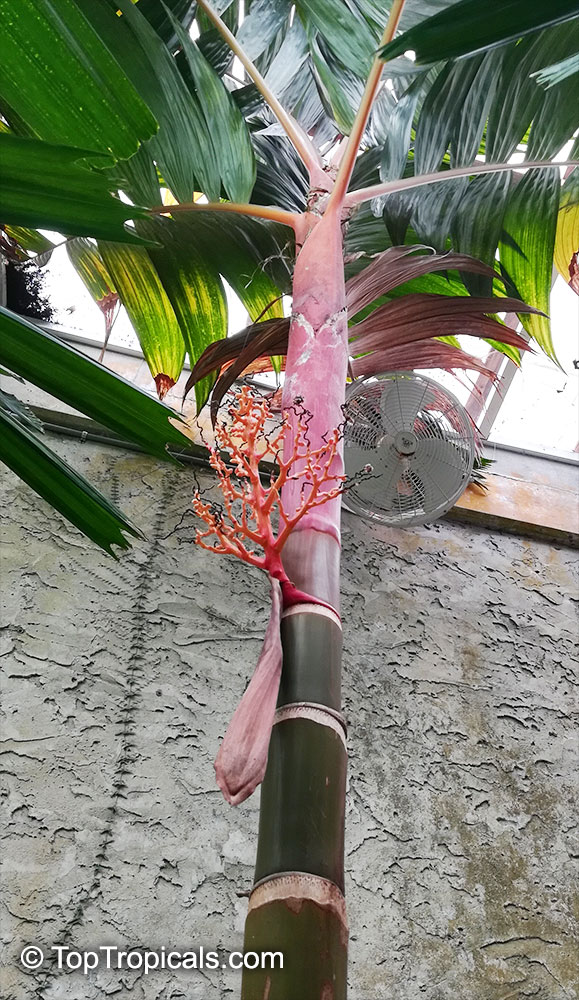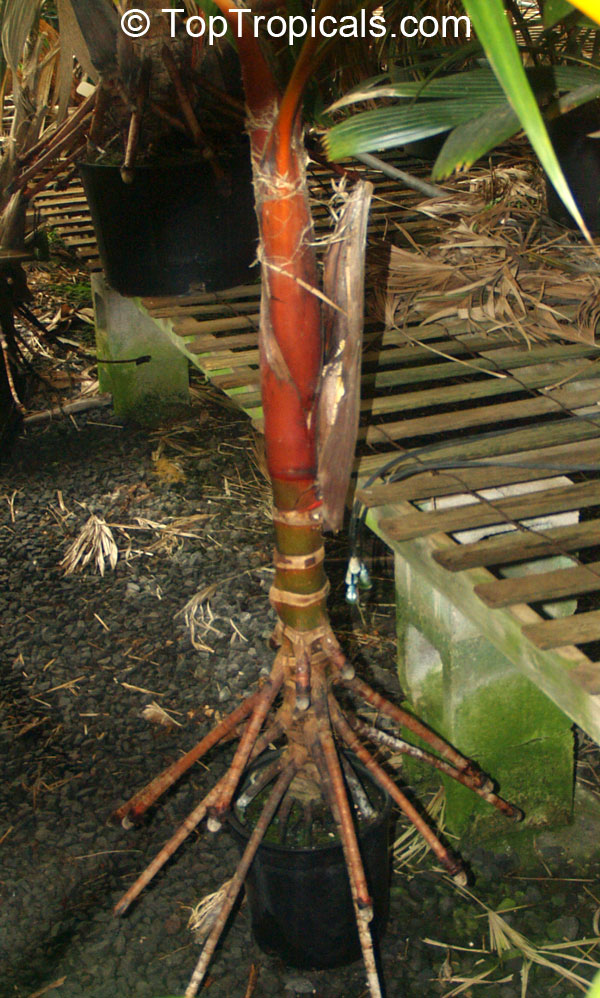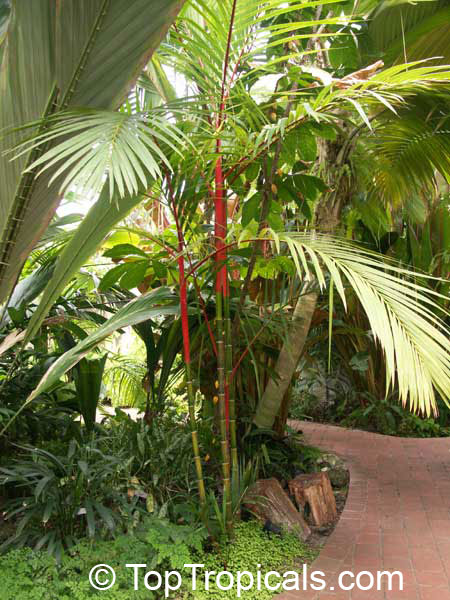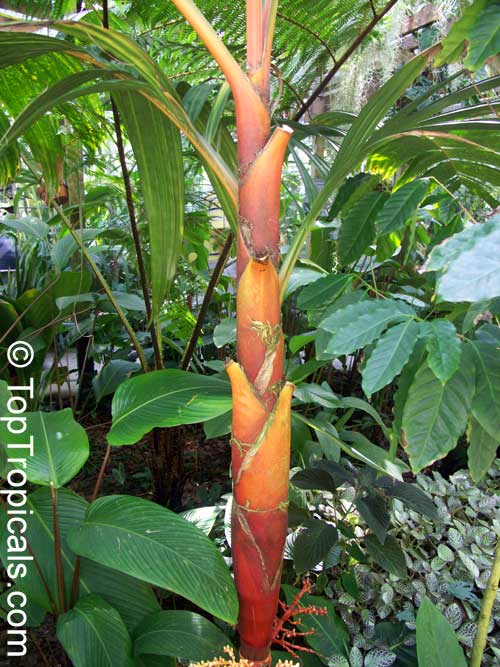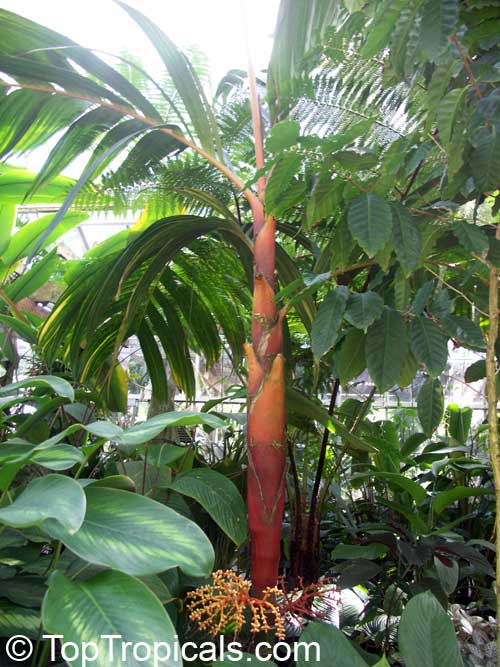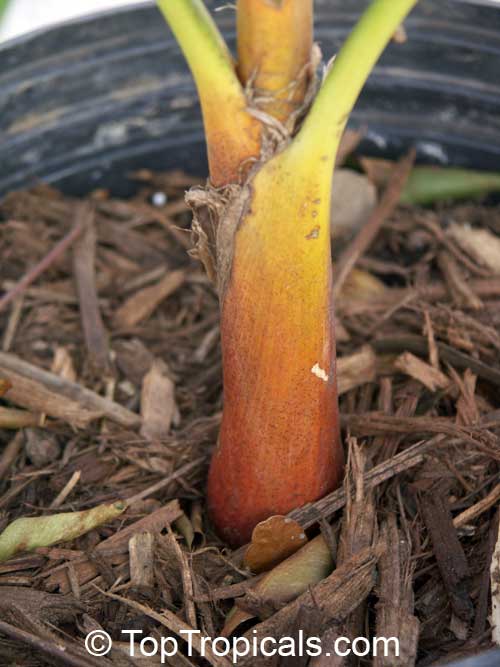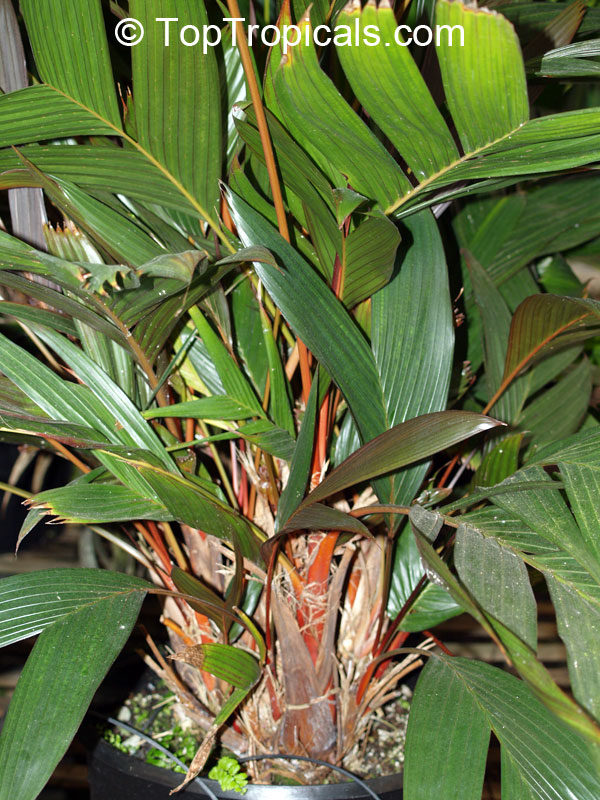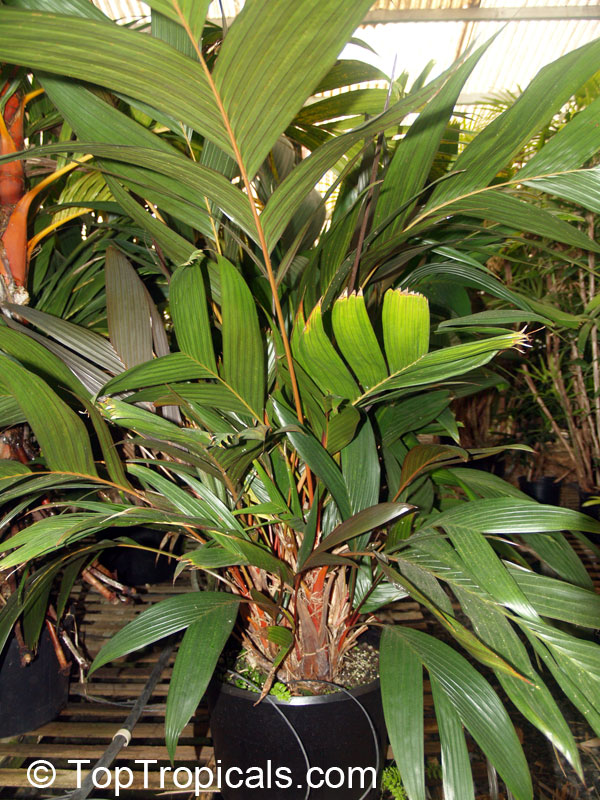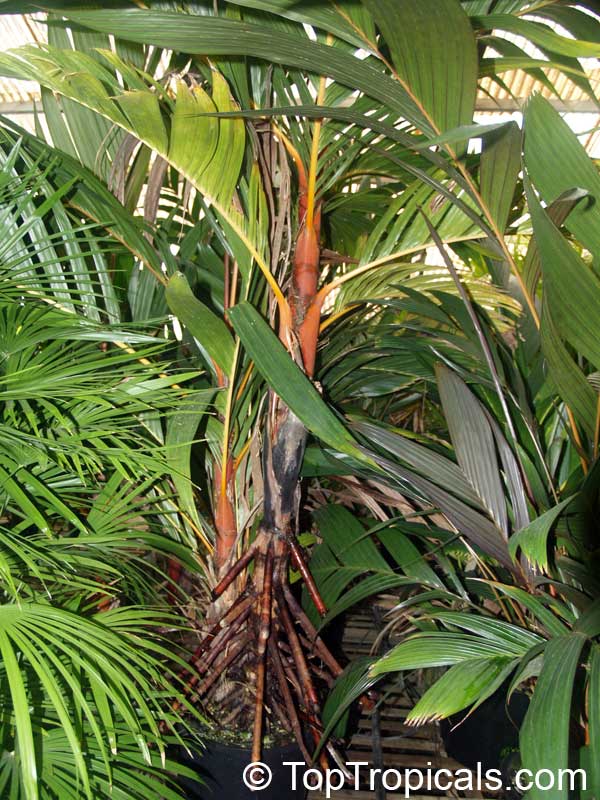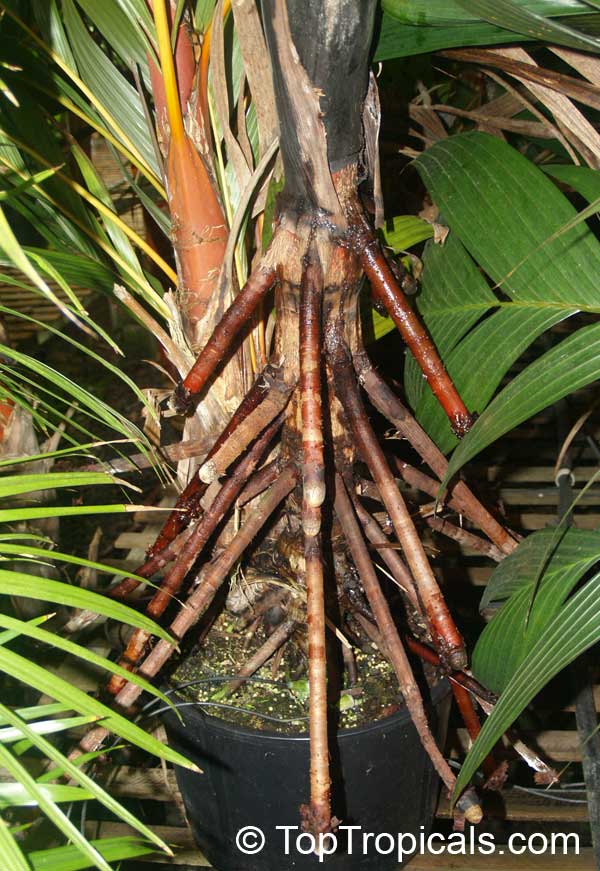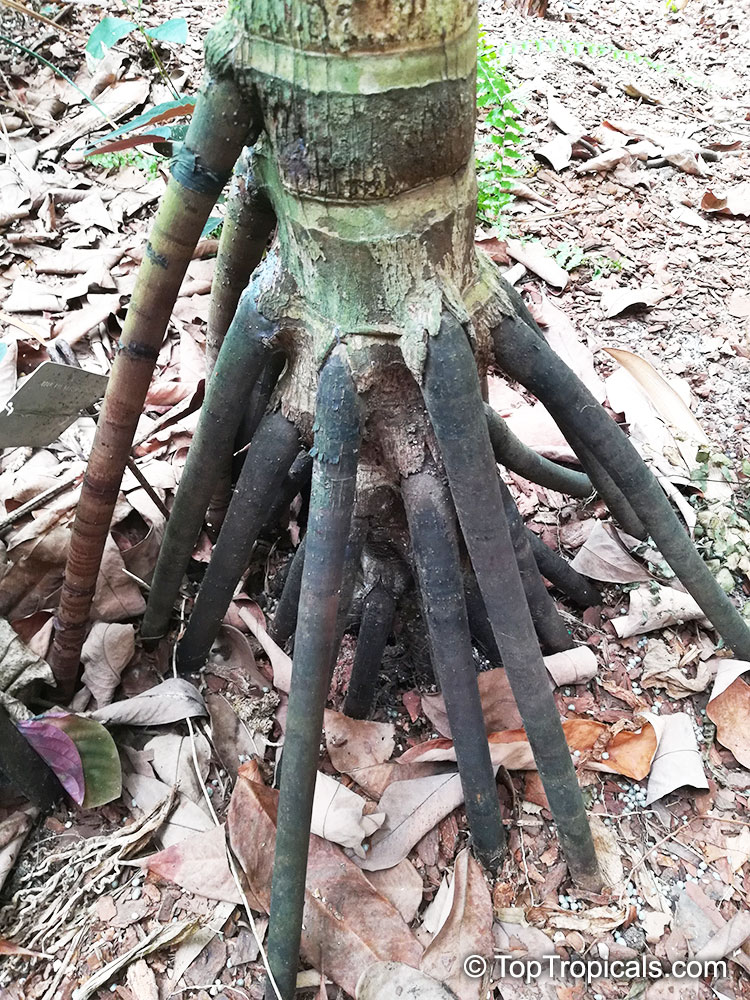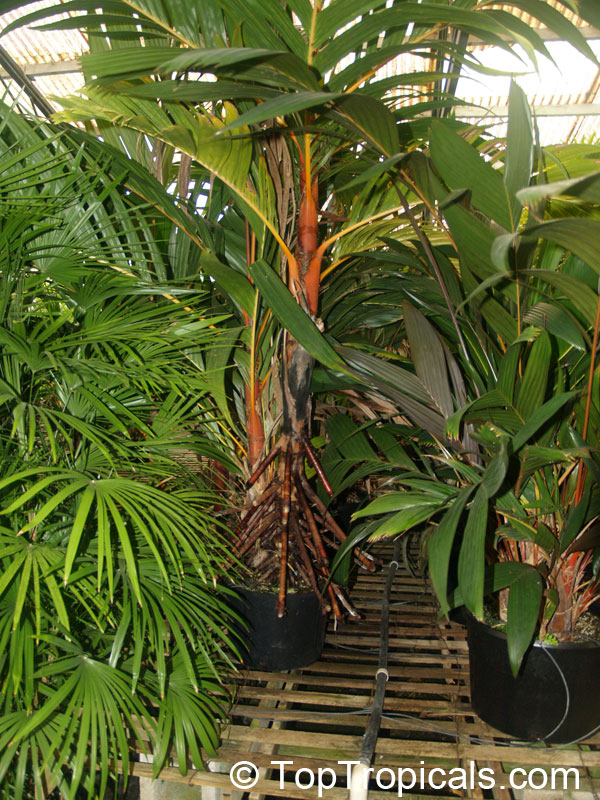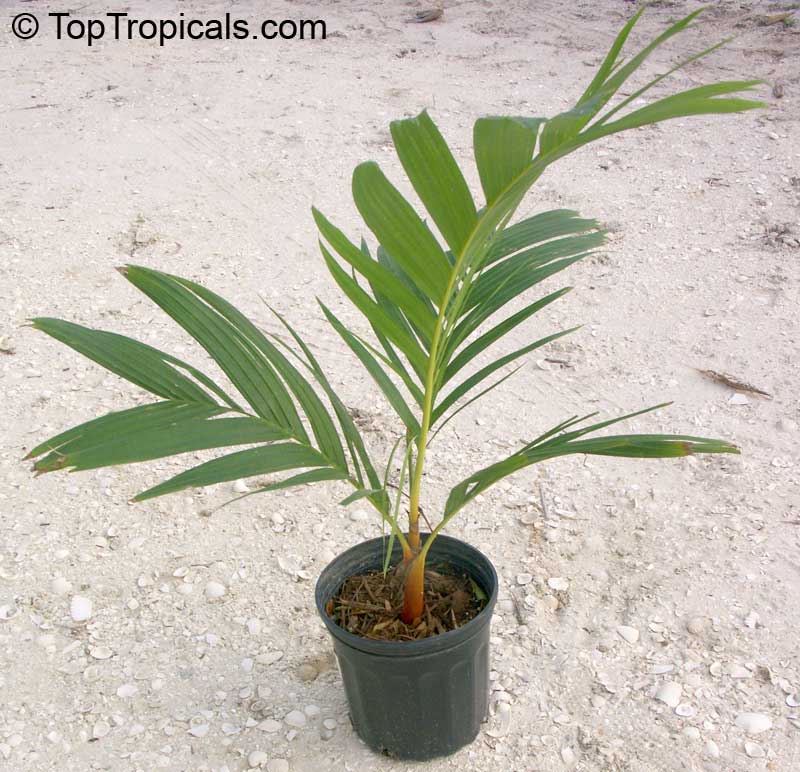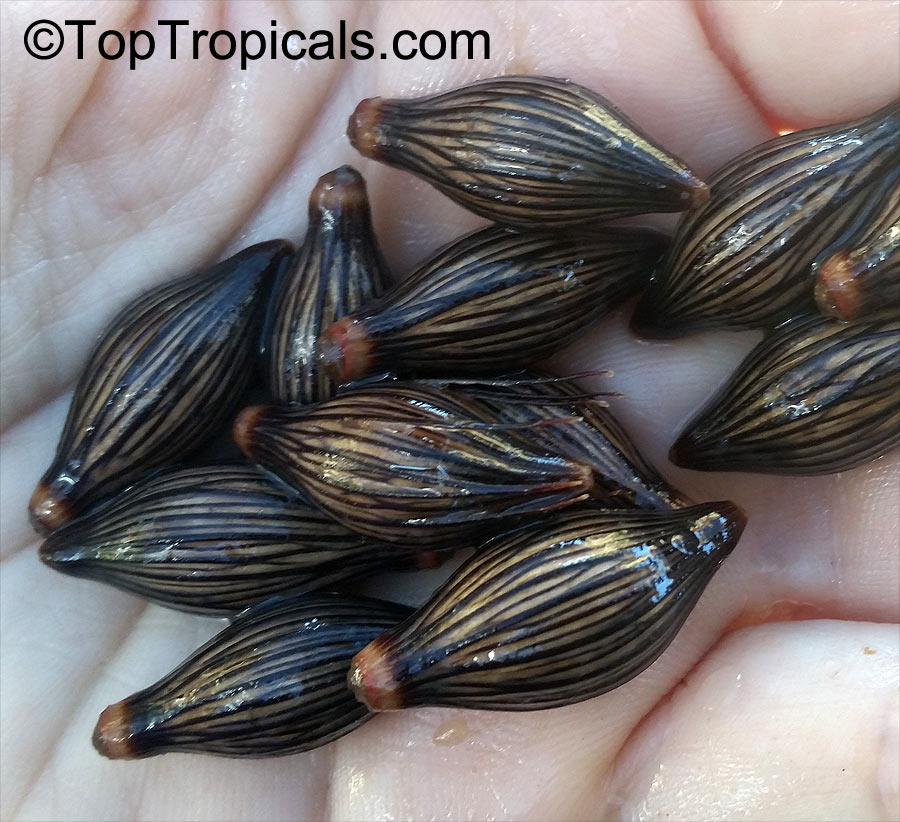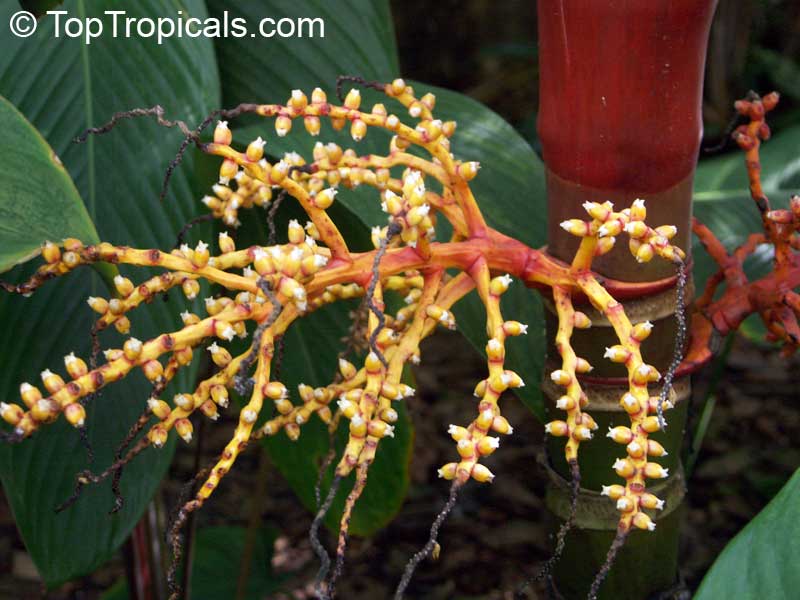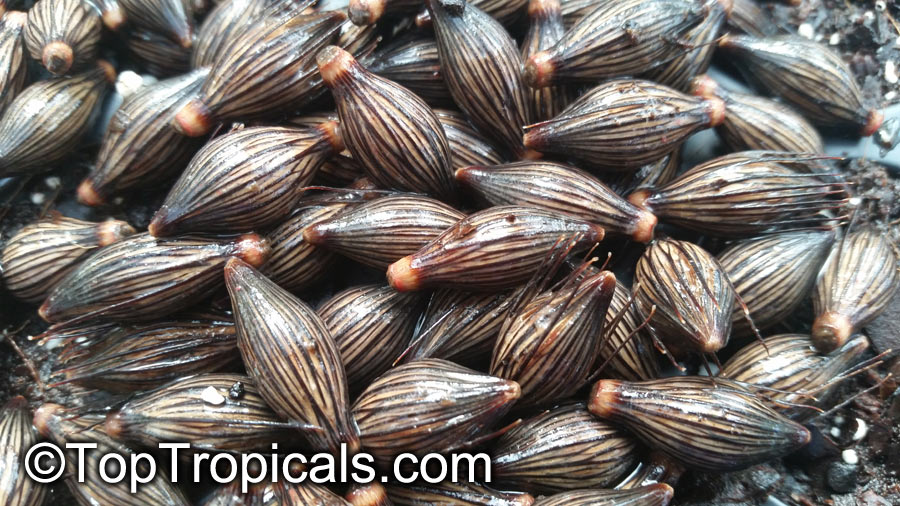Pictogram Guide · Mouse over pictogram for definition
Botanical family: Arecaceae / Palmae
| Number of plants found: 152 | Next | 
|
Go to page: | 1 | 2 | 3 | 4 | 5 | Last |
Acoelorrhaphe wrightii
Paurotis, Silver Saw Palmetto, Everglades PalmFamily: Arecaceae / Palmae
Origin: Indies, Bahamas, Central and South Florida.








The leaves of the Acoelorraphe wrightii (Paurotis) are light green color, palmate and pinnate. Although it is a small palm, its leaves give it an especially lush and airy texture. Paurotis can tolerate salt wind and slightly salty soils. It is also known to be cold hardy to the low 30s F for a short time, but it must be covered with a blanket or a cover during those times.
It is best to keep the plants moist and then gradually reduce the amount of water as the plant matures. If you are in a cold region and want to grow this plant in a pot, you will need to make sure it is in a well-draining location. The pot should be placed in a semi-shaded area and mulch should used around the base of the pot. Regular watering and feeding should also be given throughout the growing season.
Overall, Acoelorraphe wrightii (Paurotis) is a great palm to grow in USDA zone 9-11. It requires full sun or semi-shade and regular water to thrive, making it an excellent choice for any garden, especially near a seaside location.
Adonidia merrillii, Veitchia merrilli
Christmas PalmFamily: Arecaceae / Palmae
Origin: Philippines
USDA Zone: 10-11?






Adonidia comes from Adonis, the handsome sun god of the ancient Greeks. This is neat looking, compact palm that resembles a dwarf version of the royal palm (Roystonea regia) which it matches in beauty. Christmas palm grows to an overall height of only about 16 ft. By late fall fruit are beginning to ripen and by late December are bright and brilliant red - like ornaments on a Christmas palm! It is a popular landscaping item in the capital of Philippines, which inspires another popular name, the Manila palm.
Christmas palm is moderately salt tolerant. Prefers full sun but will take some shade.
Small stature makes it perfect for use in small scale plantings. It is sometimes closely planted in groups of two or three.
Good specimen container plant. The formal symmetry of Christmas palm is nicely showcased when it is grown in a container. Indoors or out this is a glamourous container plant that can maintain its looks despite hardship and neglect.
Aiphanes horrida, Aiphanes aculeata, Aiphanes caryotifolia, Martinezia truncata
Devil Palm, Ruffle Palm, Spine PalmFamily: Arecaceae / Palmae
Origin: Trinidad and Tobago







This very different dwarf palm from South America, has attractive spines all over it and fabulous, gracefully arching leaves, covered with white powder, with long, wavy, closely- spaced leaflets. The fragrant flowers produce clusters of red fruit making it ideal for conservatory or a warmer garden where it can actually stand occasional, but not hard freezing.
A solitary, showy spiny small tree. In the wild it grows 9-15 feet tall with a stem diameter of 2-4 inches. The epicarp and mesocarp of the fruit are rich in carotene and are eaten in Colombia, while the seeds are used to make candles.
The range of the species is found in forests of Bolivia, Brazil, Colombia, Peru, Trinidad and Tobago and Venezuela. The species is cultivated as an ornamental throughout the tropics.
Also known as Devil Palm, Corozo, Cocos rura, Mararay, Corozo, Macaguita, Marara, Macahuite, Corozo del Orinoco, Corozo anchame, Mararava, Cubarro, Chonta, Chascaraza, Charascal, Corozo chiquito, Corozo colorado, Pujamo, Gualte, Chonta ruro, Pupunha xicaxica, Coyure palm, Ruffle palm, Aculeata palm and Spine palm.
Scientific Synonyms - Caryota horrida, Aiphanes aculeata, Euterpe aculeata, Martinezia aculeata, Martinezia caryotifolia, Marara caryotifolia, Aiphanes caryotifolia, Tilmia caryotifolia, Bactris premorsa, Aiphanes premorsa, Martinezia truncata, Aiphanes truncata, Martinezia elegans, Aiphanes elegans, Marara bicuspidata, Martinezia ernestii, Aiphanes ernestii, Martinezia killipii, Aiphanes killipii, Aiphanes orinocensis.
Allagoptera caudescens
Buri PalmFamily: Arecaceae / Palmae
Origin: Brazil







Allagoptera caudescens is a large, upright, palm growing up to 5-10 feet tall in its native habitat. It prefers full sun and regular watering, although it can tolerate some drought. It is an excellent choice for seaside gardens as it is extremely salt tolerant, making it perfect for areas with wind and salty air. This slow-growing species can be grown in USDA Zones 9-11 and requires moderate water for best results.
In colder regions, outdoors, the Buri Palm does best with winter protection or in a container, as temperatures below 20�°F can damage the plant. When growing this species in a container, it is recommended to use a high quality potting mix, making sure it stays well drained, as soggy soils can lead to root rot. During the growing season, water your Allagoptera caudescens regularly, allowing the top few inches of the soil to dry out in between waterings. Apply a balanced liquid fertilizer every few weeks during the active growing season for optimal growth.
Archontophoenix alexandrae, Ptychosperma alexandrae
King Palm, Alexandre Palm, Nothern Bangalow PalmFamily: Arecaceae / Palmae
Origin: Northern Australia Tropical rainforest







For those lucky enough to live in an area with a climate suitable for Archontophoenix alexandrae (King Palm), it can be a stunning addition to any garden. Native to the Northern Australia tropical rainforest, this species is more commonly known as the King Palm. It is a large palm, typically growing up to 30 feet tall, but some can reach heights of up to 50 feet. The emerald green leaves, often spiraling out from the crown of the trunk and crowned by the glossy green crownshaft, give this palm species a dramatic presence.
This Palm thrives best in full sun or semi-shade, and requires moderate water and lush soil to reach its majestic potential. Fertilizer and mulch are also necessary for optimum growth. If growing in a pot in colder regions, it is important to provide a consistent level of warmth and humidity, and to reduce water in the colder months.
This elegant palm is an excellent choice for any garden. For smaller spaces, the King Palm grows well as a multi-stemmed small tree of 10-20 feet. For larger gardens and landscapes, the bigger specimens of this palms can reach heights of over 20 feet.
No matter the size or shape of your garden, Archontophoenix alexandrae can be the perfect feature for your landscape. With the proper care and attention, this stunning palm is sure to add a statement to your garden for years to come.
Archontophoenix cunninghamiana
Bangalow Palm, Seaforthia PalmFamily: Arecaceae / Palmae
Origin: Northern Australia







This is a single, slender trunked palm (30 ft). Given a shady spot, they grow slim and elegant, holding a crown of dark green leaves above a green crownshaft. It is slightly hardier than Archontophoenix alexandrae and may be tried in a sheltered corner in full sun in favoured locations. Generally similar in appearance to the foregoing, it makes a good house- or conservatory plant if the light is good.
Areca catechu, Areca triandra
Areca Palm, Betel Nut , Bunga, PinangFamily: Arecaceae / Palmae
Origin: Malaysia, Singapore








An easily grown palm for both the tropics and warm sub-tropical areas (it is apparently cold sensitive). It prefers shade when young, although it does take full sun at quite a young age. It likes a moist, well drained soil, and doesn't like to dry out. This palm is the basis of a large industry in SE Asia, where the seed is chewed for its intoxicating properties, as well as its supposedly beneficial side effects, such as aiding digestion, and controlling internal parasites and dysentery.
Areca novohibernica
Kugumaru PalmFamily: Arecaceae / Palmae
Origin: Solomon Islands






Areca novohibernica (Kugumaru Palm) is a small palm native to the Solomon Islands. It grows to be 10-20 ft tall and prefers shade or semi-shade areas where it can receive regular water and care. The crown of this palm is made of broad, finely tipped leaflets. It has a slim trunk with robust aerial roots that develop as stilts at the base.
Areca novohibernica is able to tolerate a wide range of climates, ranging from USDA Zones 9-11. This species of palm has a very elegant habit and is typically planted isolated or in groups underneath bigger trees. This is due to its small size. For the best growth, it should be planted in a soil that is rich in organic materials, draining, and kept constantly moist.
For those who live in colder regions and would like to grow Areca novohibernica in a pot, there are a few steps that should be taken to ensure proper care. The pot should be placed in a sheltered area, such as close to a wall or in a greenhouse. The soil should be a well-draining potting soil that has been enriched with organic matter. During the winter, the pot should be moved inside to prevent the roots from experiencing frost. The palm should be watered regularly, but the soil should never be left soggy. During the winter months, the pot should be monitored for signs of drying out and watered whenever the soil begins to dry.
Areca vestiaria
Orange Crownshaft PalmFamily: Arecaceae / Palmae
Origin: Molucca Islands
USDA Zone: 10-11?







The trunk of this palm is bright red to crimson, and fronds are glossy green in color. Slow growing species can reach 10-12 feet, but takes many years. It can handle temperatures down to mid 30s F.
It's an understory palm and has to be grown in shade. It requires moist soil. Do not let dry out between waterings or it will die.
| Next |  |
Use link to repeat this search:
https://toptropicals.com/cgi-bin/garden_catalog/cat.cgi?search_op=and&keyword_op=and&language=e&family=Arecaceae / Palmae
&number=10&no_change_lang=1&user=tt&sale=1&first=0
